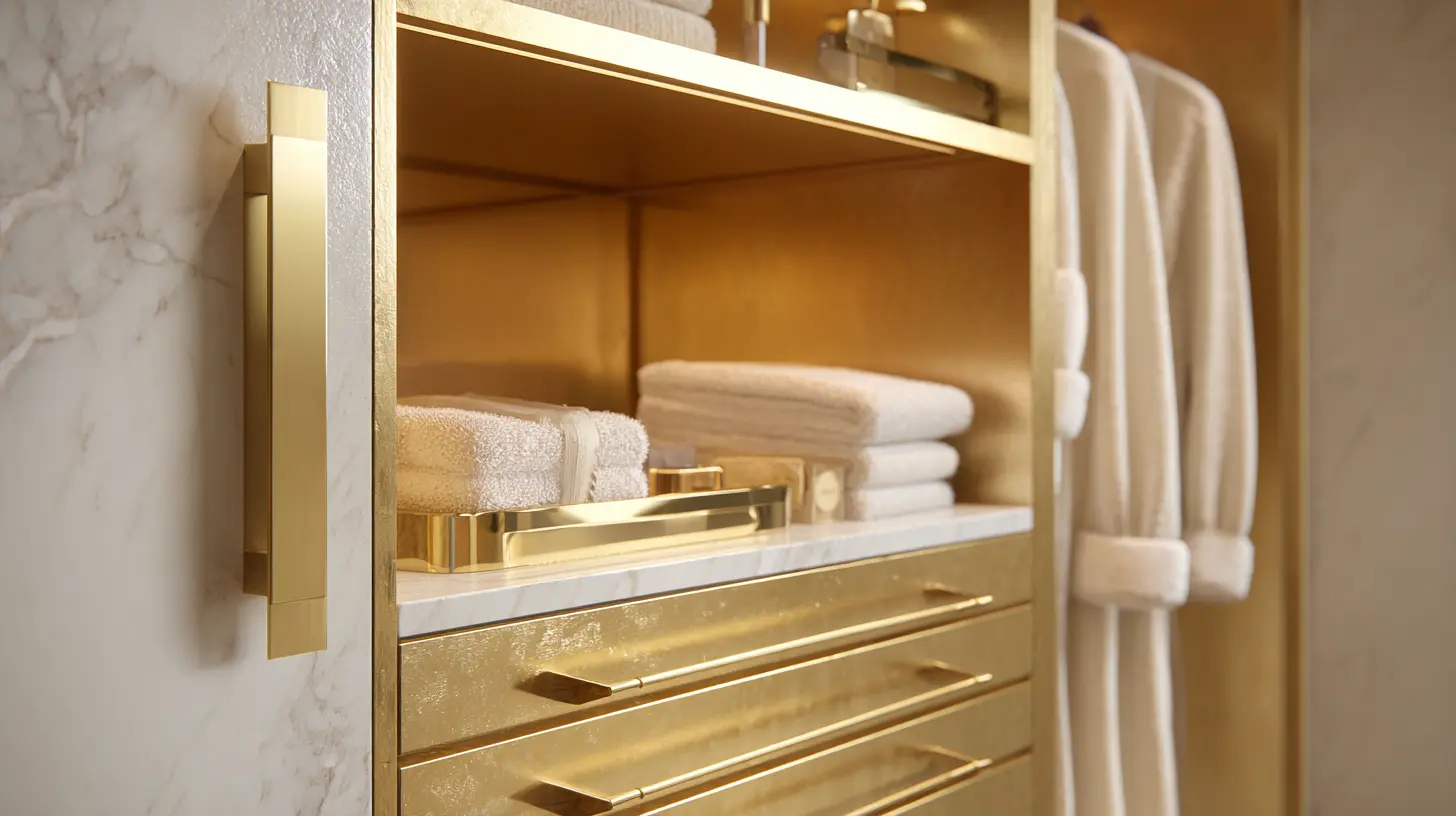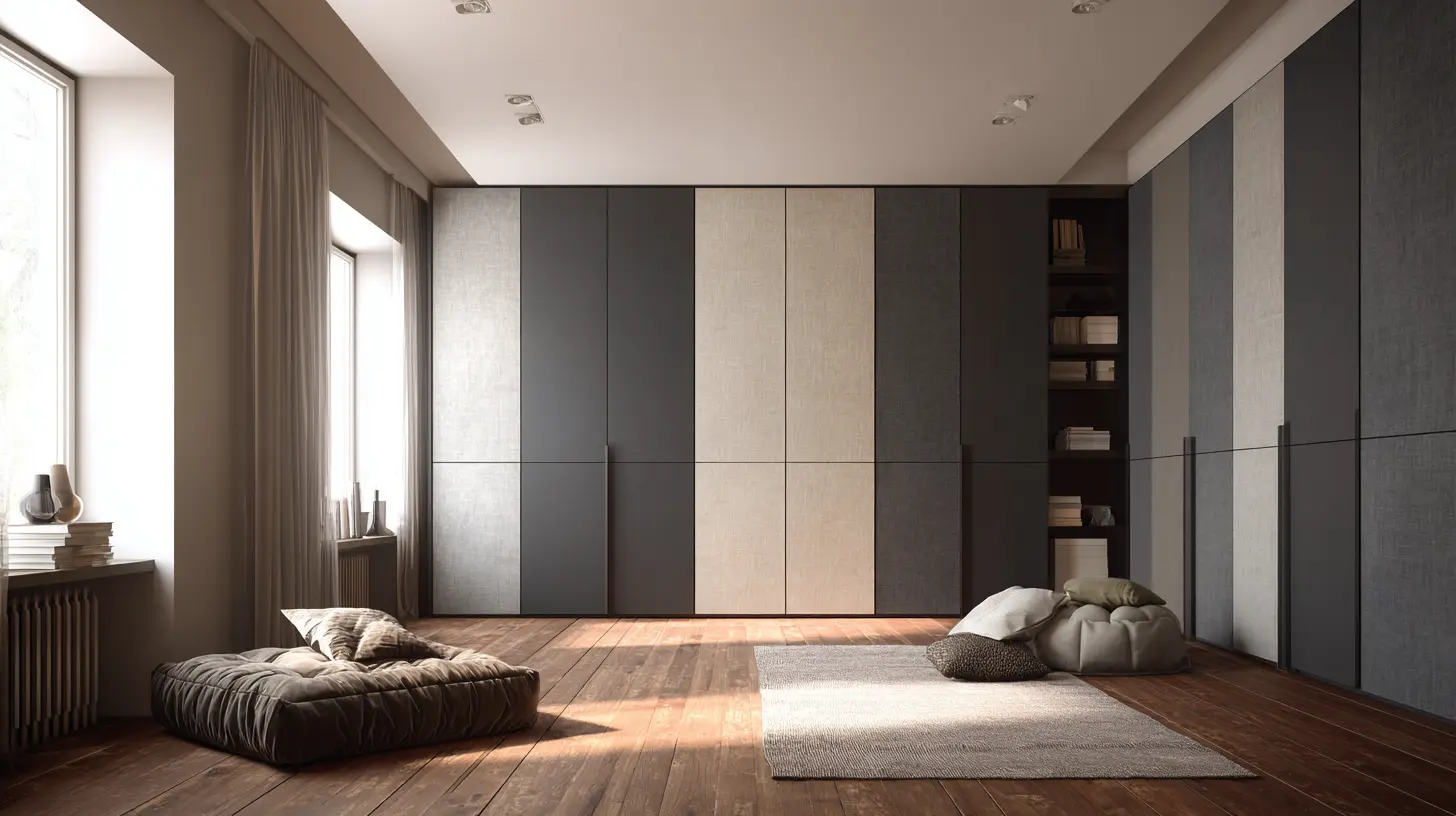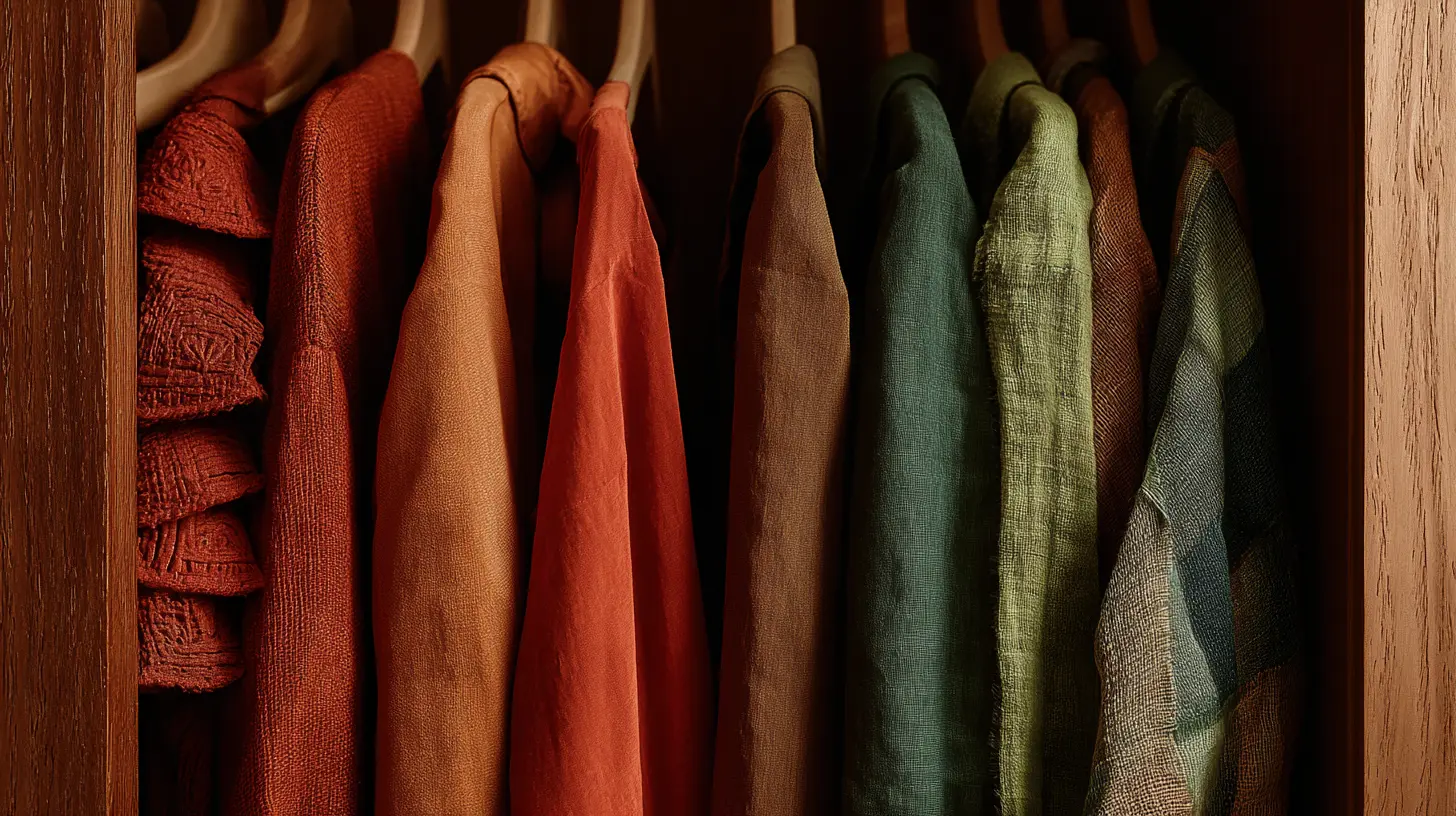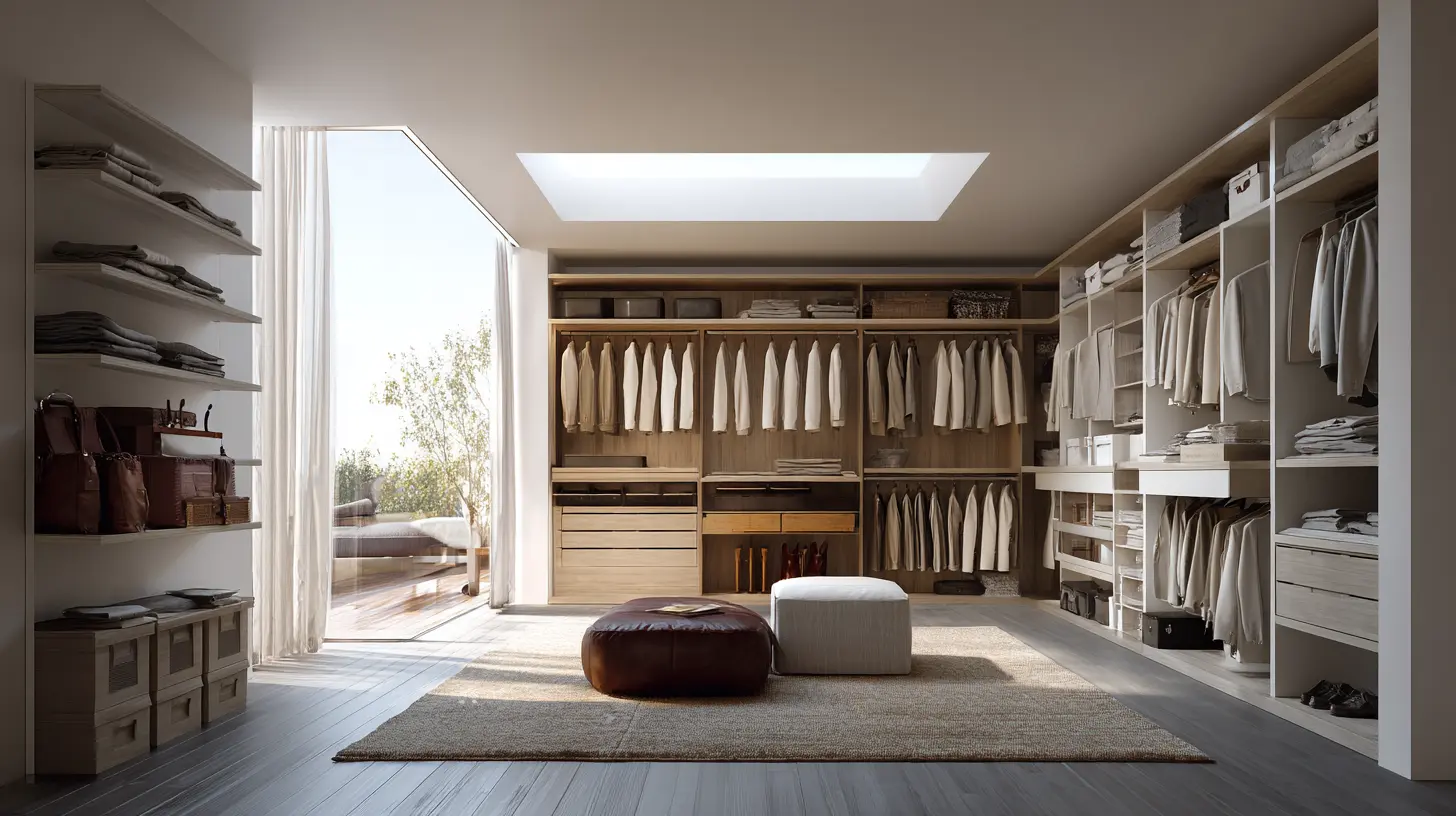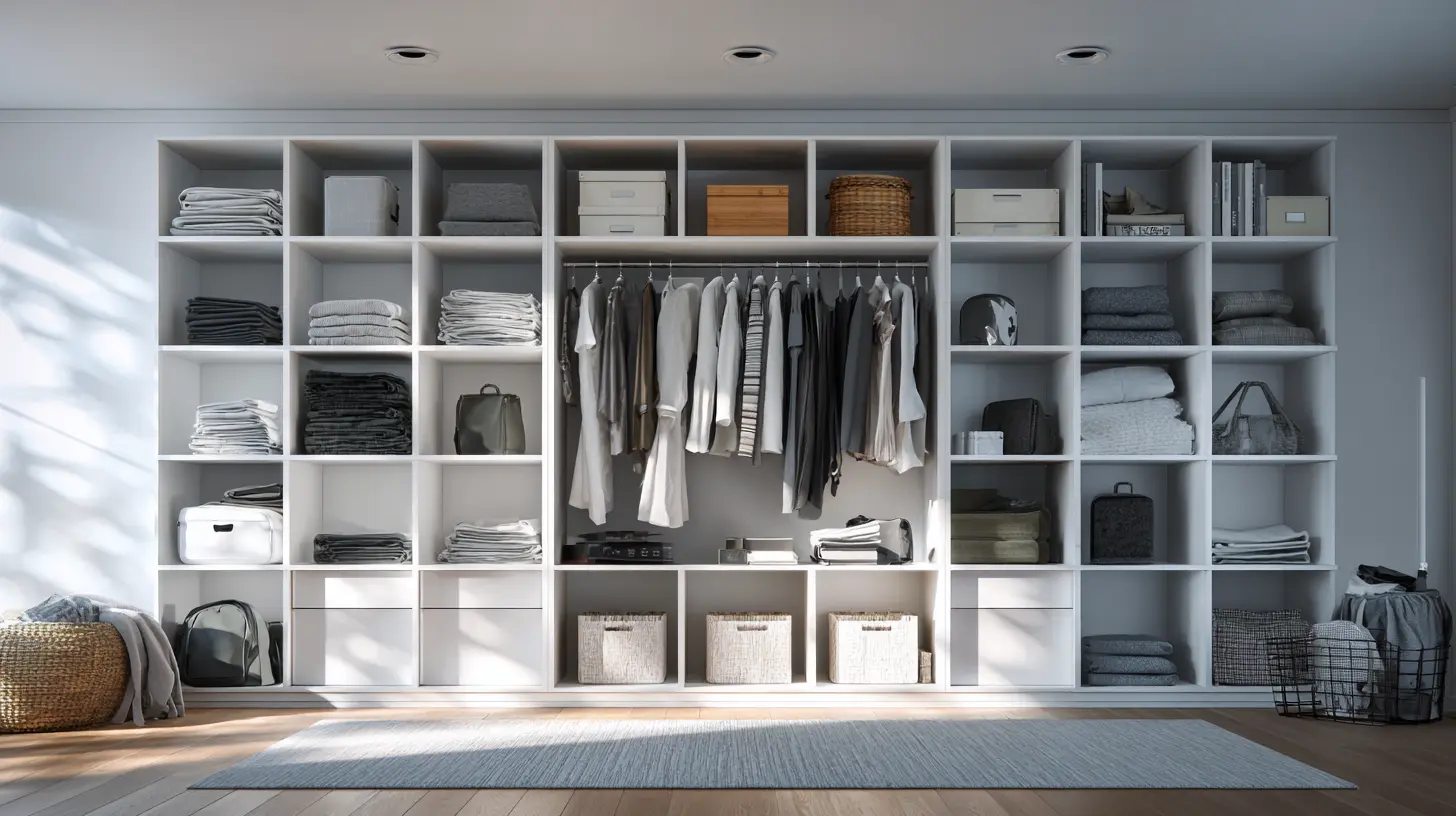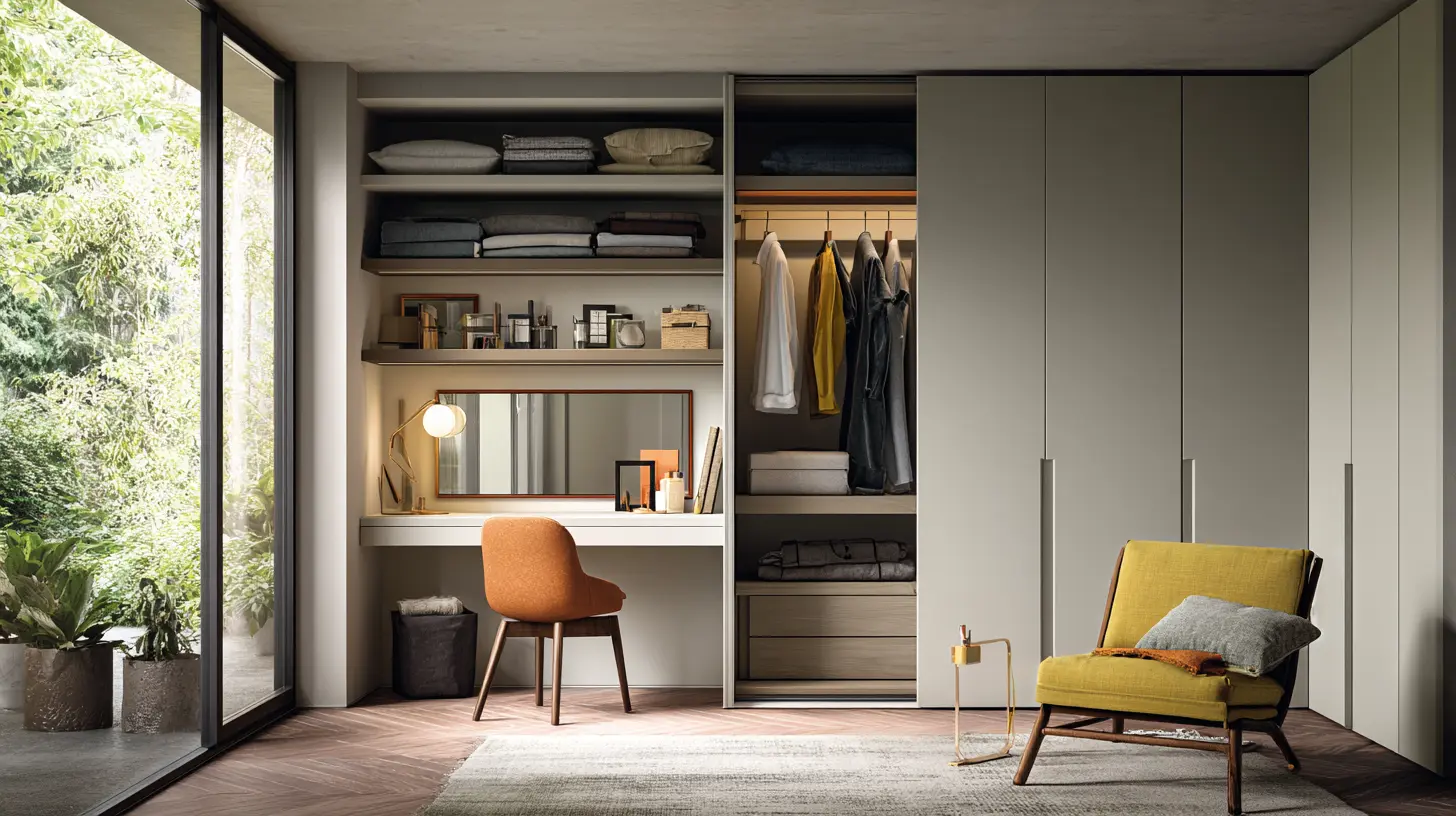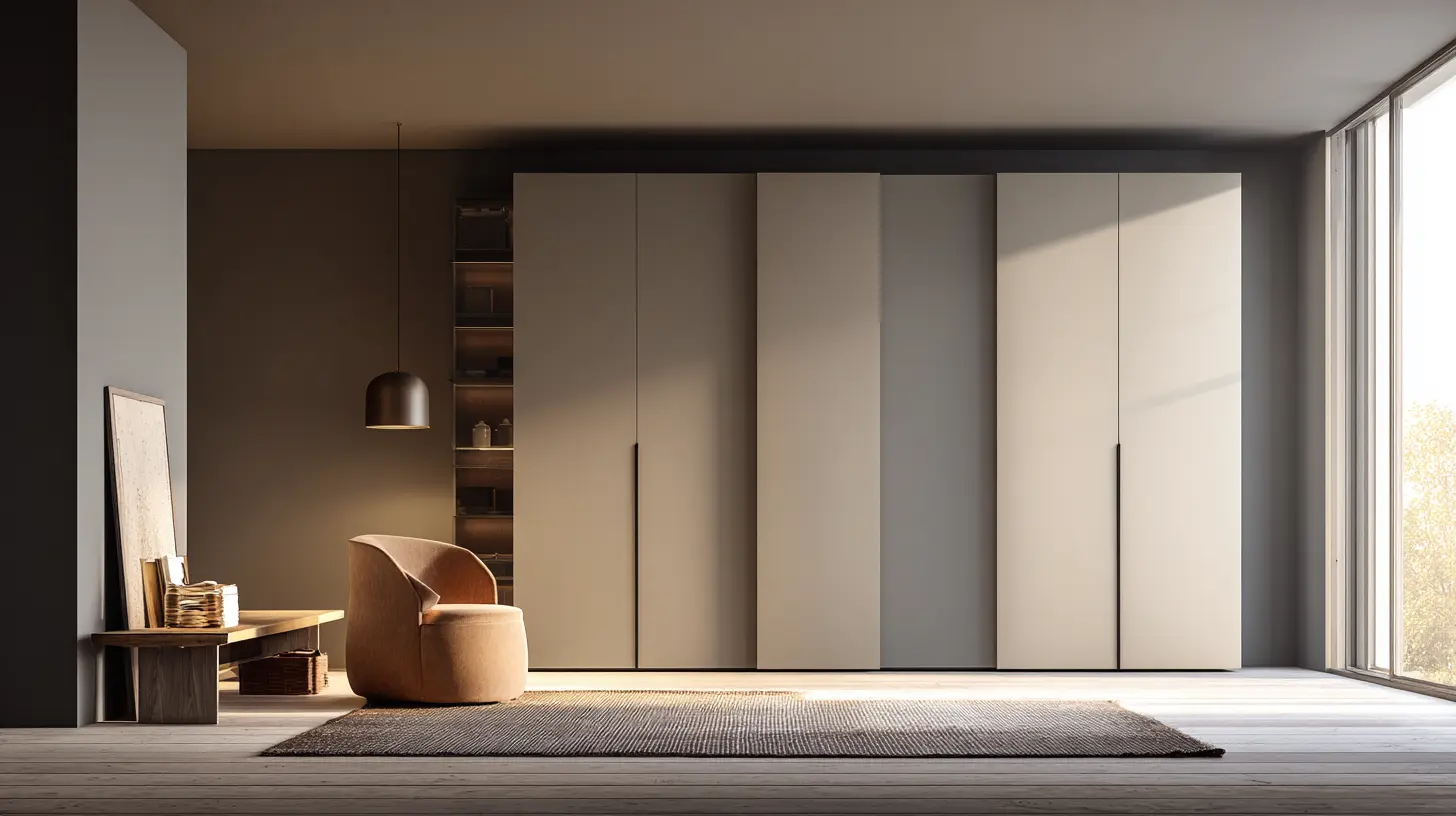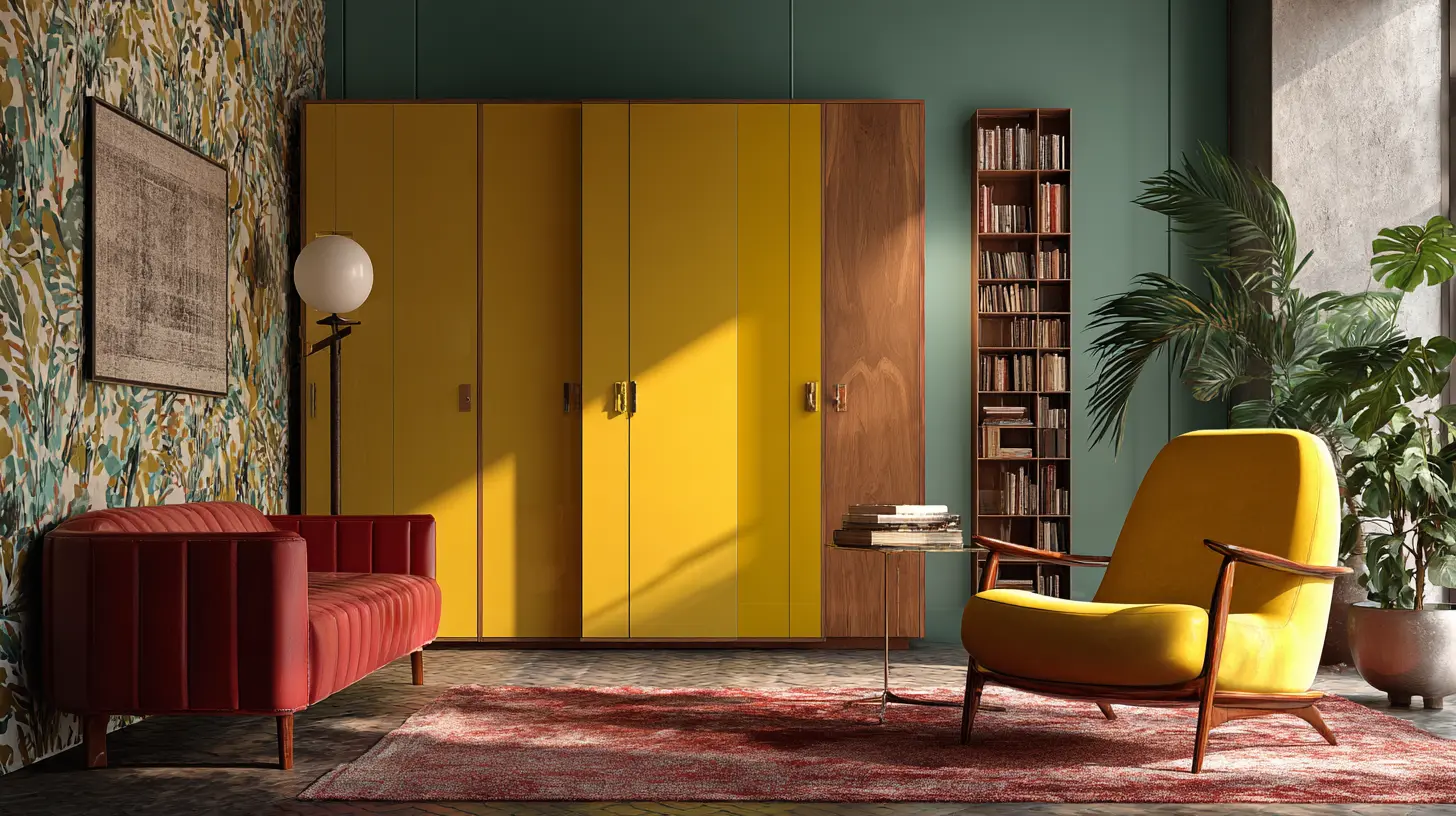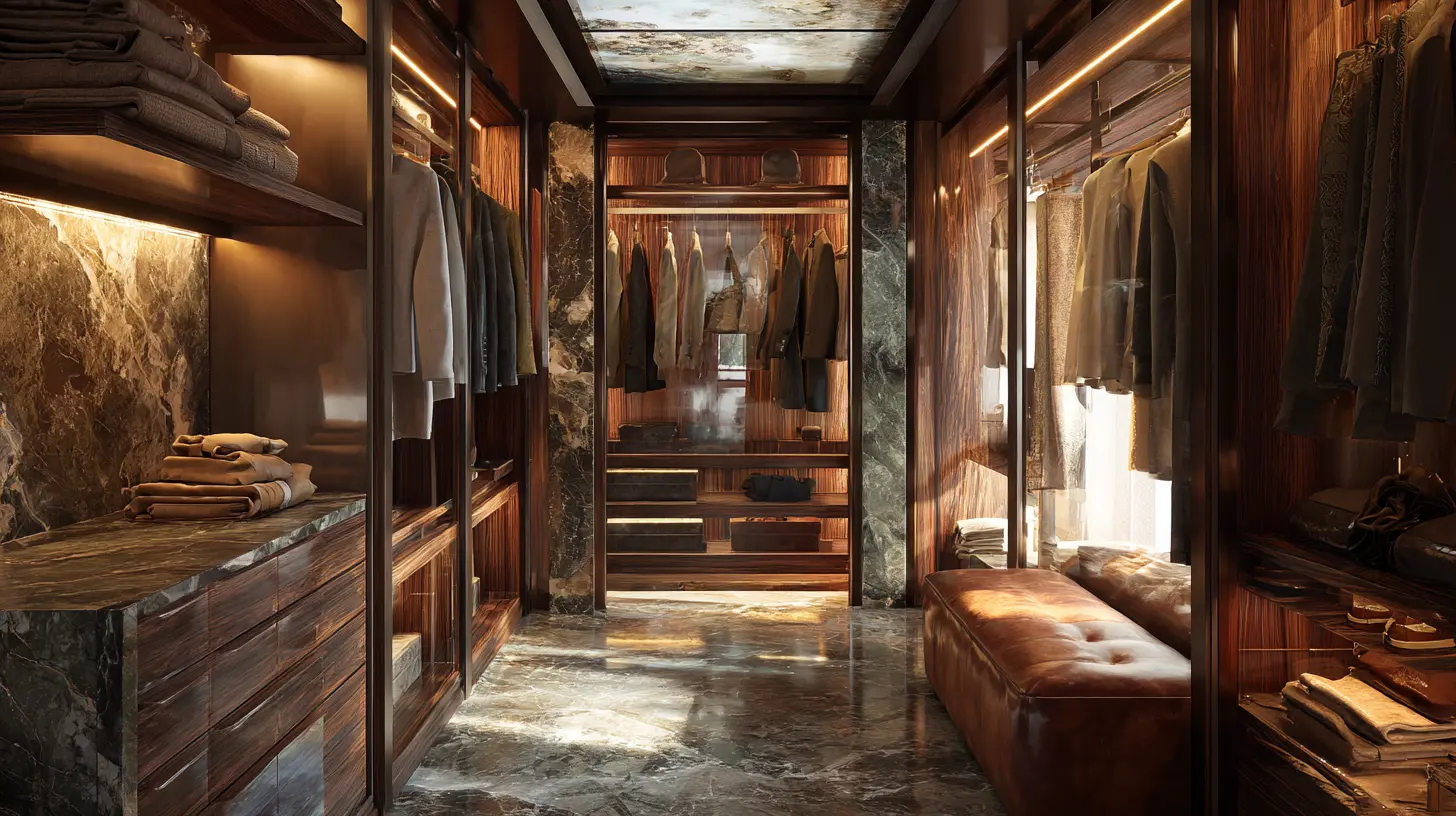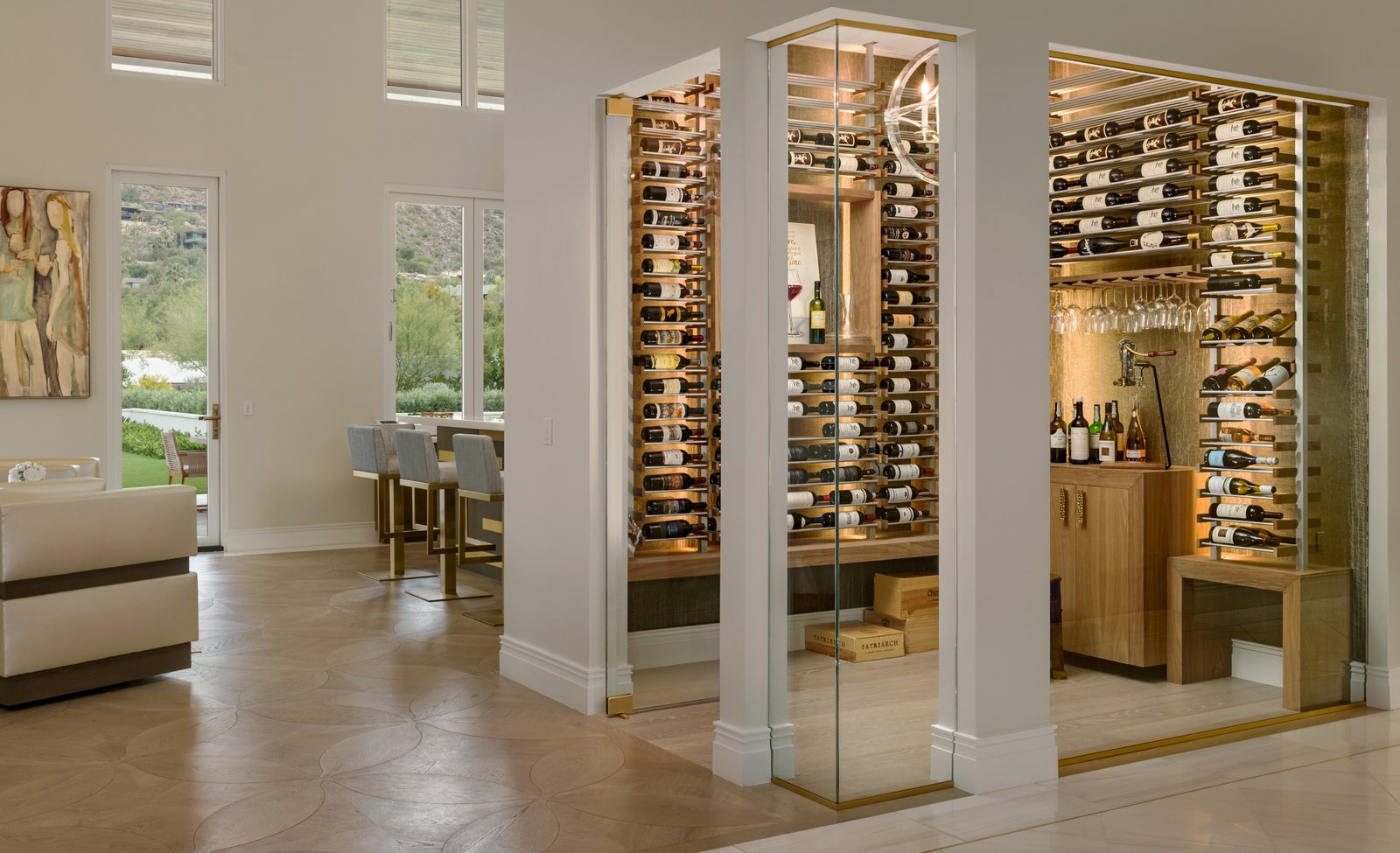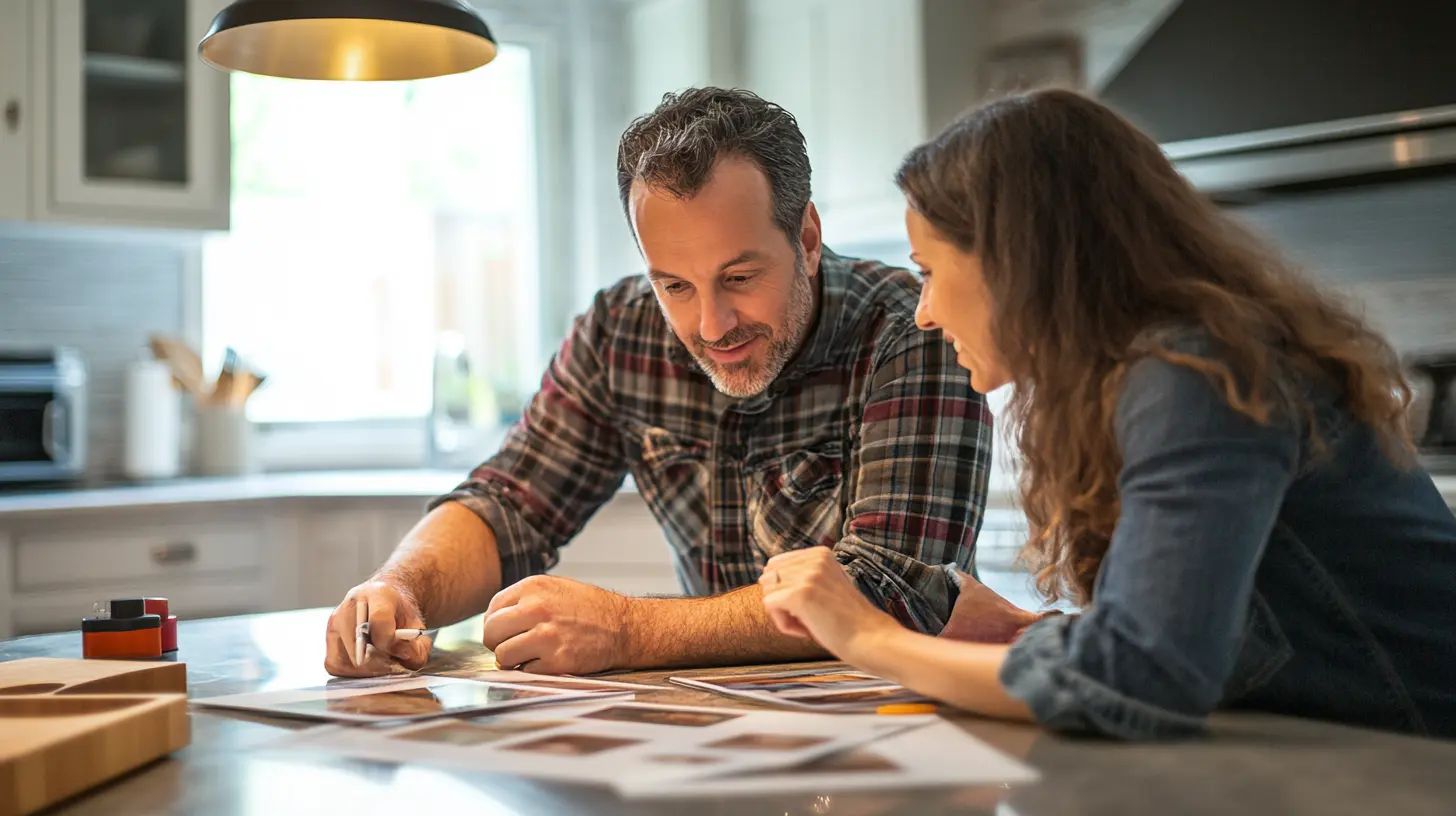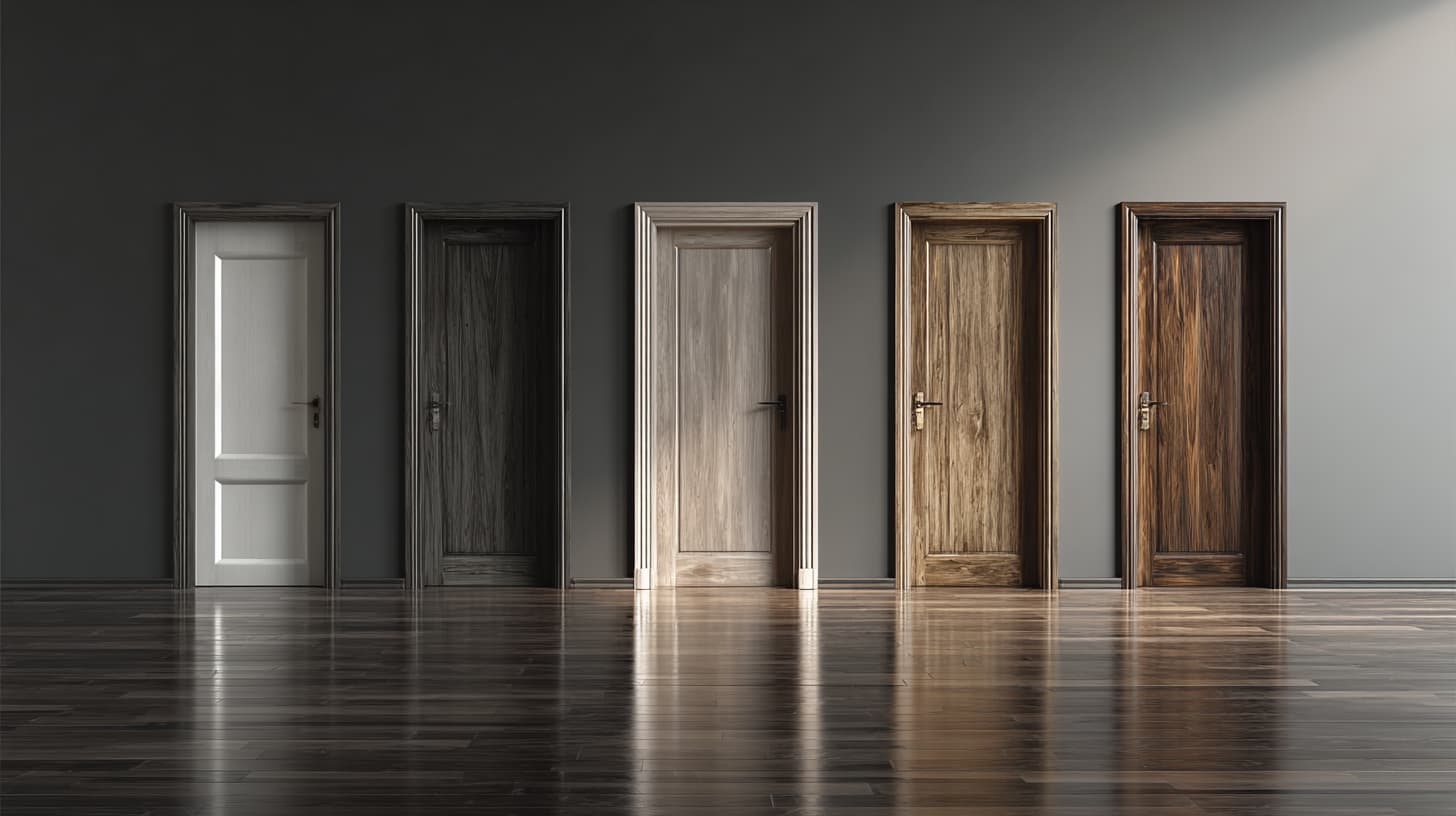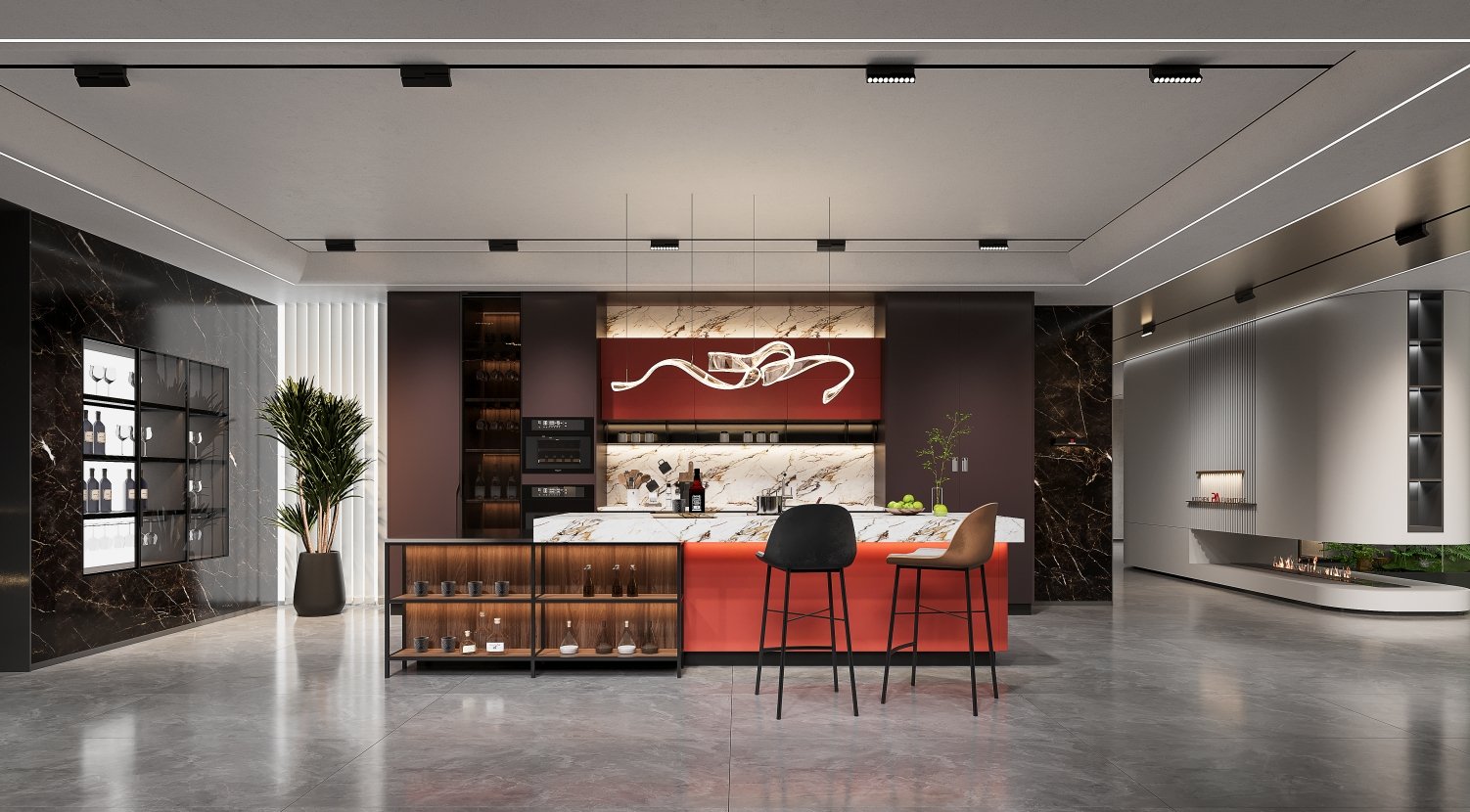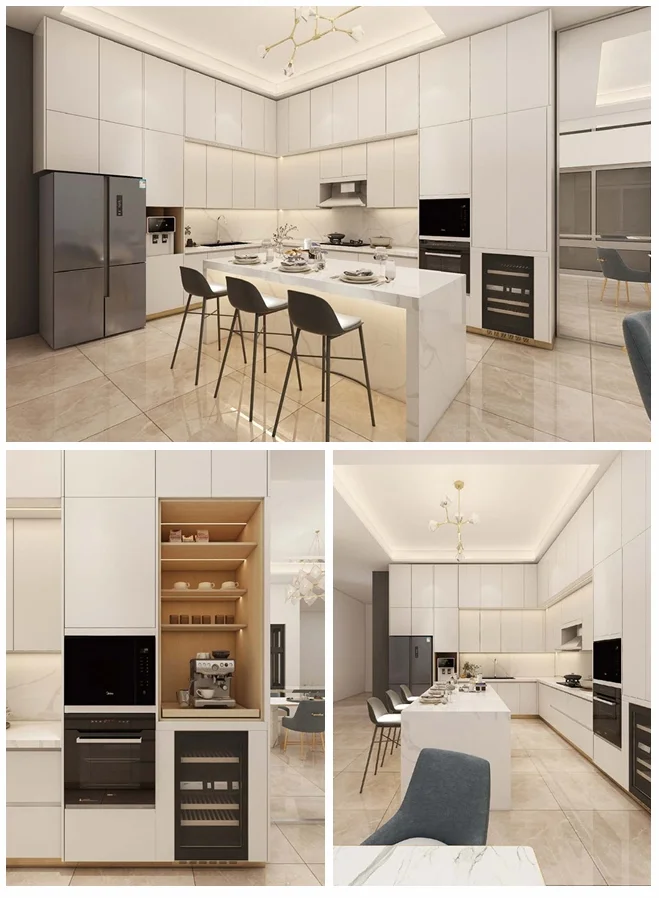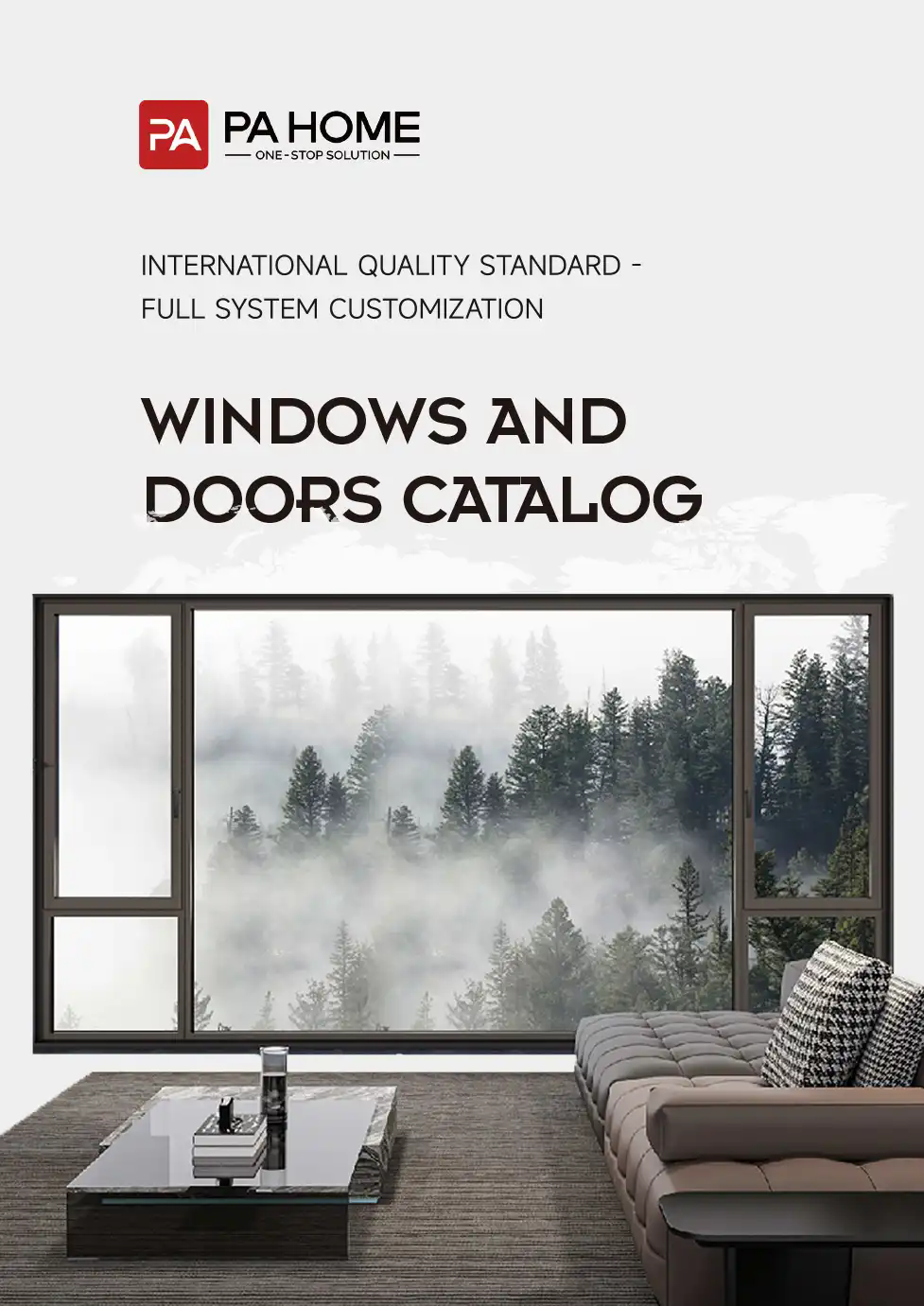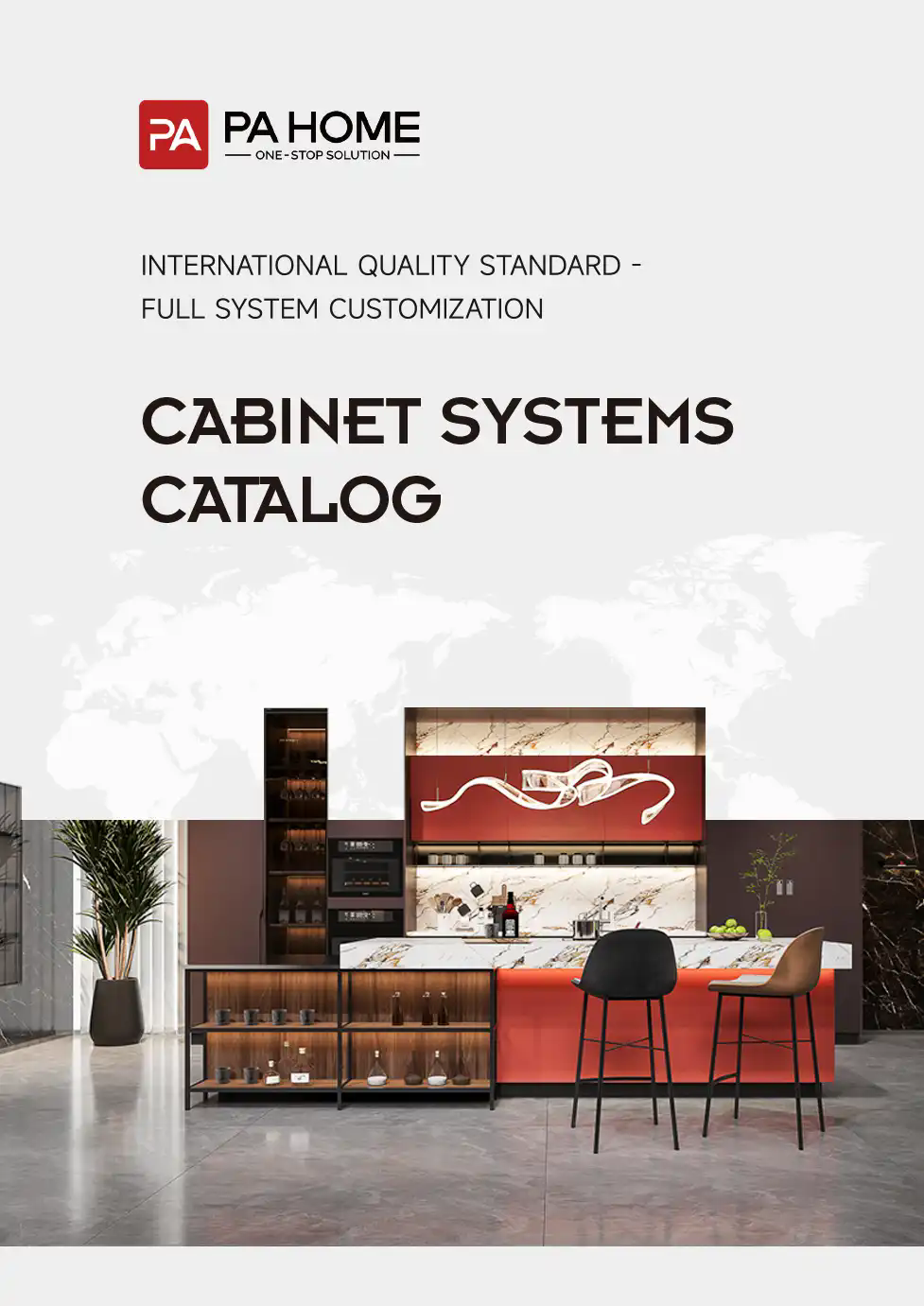1. Introduction
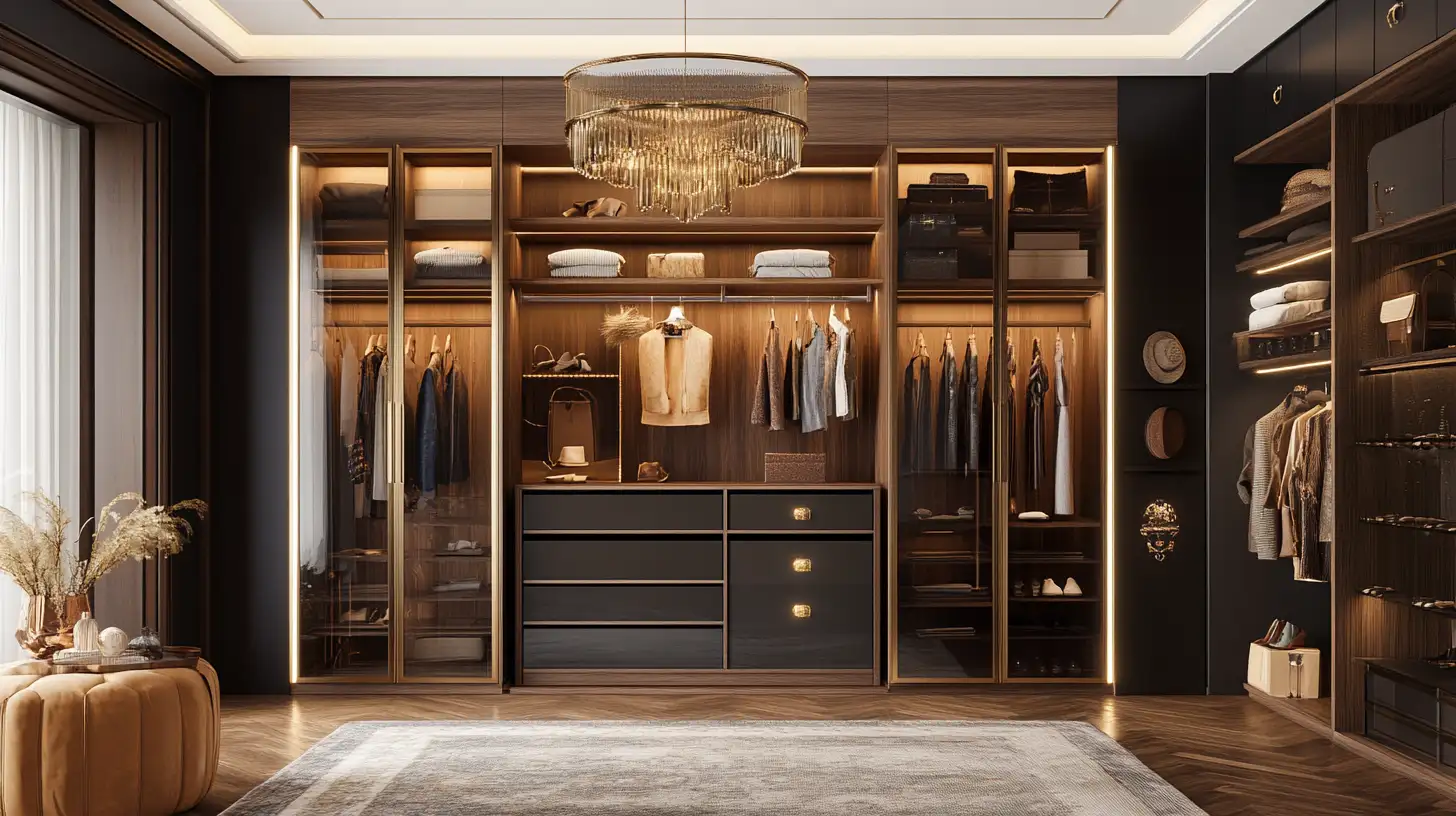
1.1 2025 Custom Wardrobe Trends Research Background
In recent years, custom wardrobes have evolved from simple storage solutions into key elements of personalized home design. As lifestyle preferences shift toward greater individualization and convenience, there has been a significant increase in demand for wardrobes that reflect personal taste, optimize space, and integrate cutting-edge technology. Consumers are no longer simply seeking functional storage solutions; they are looking for aesthetically pleasing, sustainable, and technologically advanced wardrobe designs that cater to modern living standards.
The growing trend toward wardrobe customization has been fueled by advances in design tools, manufacturing techniques, and a heightened awareness of sustainability. Custom wardrobes are increasingly becoming the focal point of bedroom design, blending style with practicality. Moreover, with the increasing influence of smart home technologies, wardrobes are not just about clothes storage but also about creating a seamless, intelligent home environment.
1.2 Purpose of the Report
This report aims to analyze the upcoming trends in custom wardrobe design for 2025, focusing on key elements such as Color, Materials, Finishes, Layouts, and Style. It will explore how each of these elements is evolving, helping designers, manufacturers, and consumers stay ahead of the trends shaping the future of wardrobe design. By understanding these trends, businesses can align their offerings to meet market demands, while consumers can make informed choices when designing their ideal wardrobe.
The objective is to provide actionable insights for both professionals and consumers, ensuring they are well-equipped to meet the challenges of an ever-evolving market that increasingly values sustainability, technology, and personalization.
2. Custom Wardrobe Color Trends
2.1 Mainstream Color Tones
Color is a critical component in any wardrobe design. For 2025, the color trends are expected to reflect both timeless elegance and the desire for individuality. Consumers are increasingly choosing colors that align with their personal aesthetic, while still adhering to broader design trends.

Neutral Tones: Neutral tones such as shades of gray, beige, and white will continue to dominate custom wardrobe designs. These colors are versatile and timeless, allowing for flexibility in combining them with different décor styles. Gray, in particular, is expected to remain a leading color in both modern and minimalist wardrobes due to its sophisticated and neutral qualities. White, on the other hand, remains a staple for creating a fresh, clean look, especially in smaller spaces where light reflection is crucial.
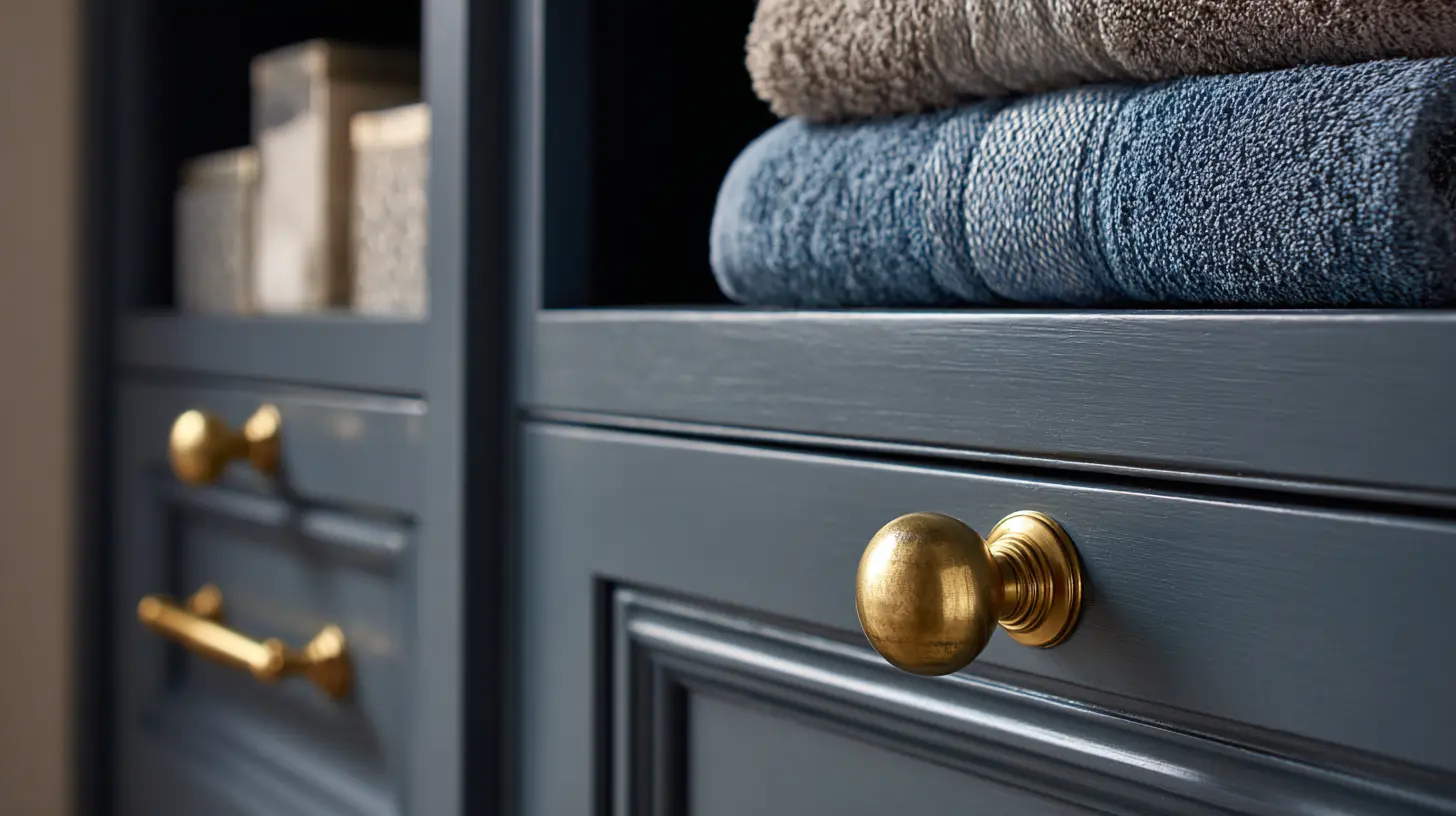
Deep Tones: As tastes shift toward more dramatic and luxurious designs, darker colors such as deep blue, charcoal, and black are making a strong return in wardrobe design. These shades add depth, create a sense of luxury, and pair well with metallic hardware or wood accents. For many consumers, dark tones symbolize sophistication and offer a striking contrast when paired with lighter interior design elements.
2.2 Bright and Bold Colors
While neutral tones dominate, brighter colors are making their mark in accent features. These vibrant colors help add personality and make a statement without overwhelming the space.
Gold and Metallics: Gold, brass, and other metallic finishes will continue to be popular in 2025, especially as accent details in handles, shelving brackets, and trims. The luxurious feel of metallic tones paired with matte or glossy finishes will provide a sophisticated touch, particularly in high-end custom wardrobes.
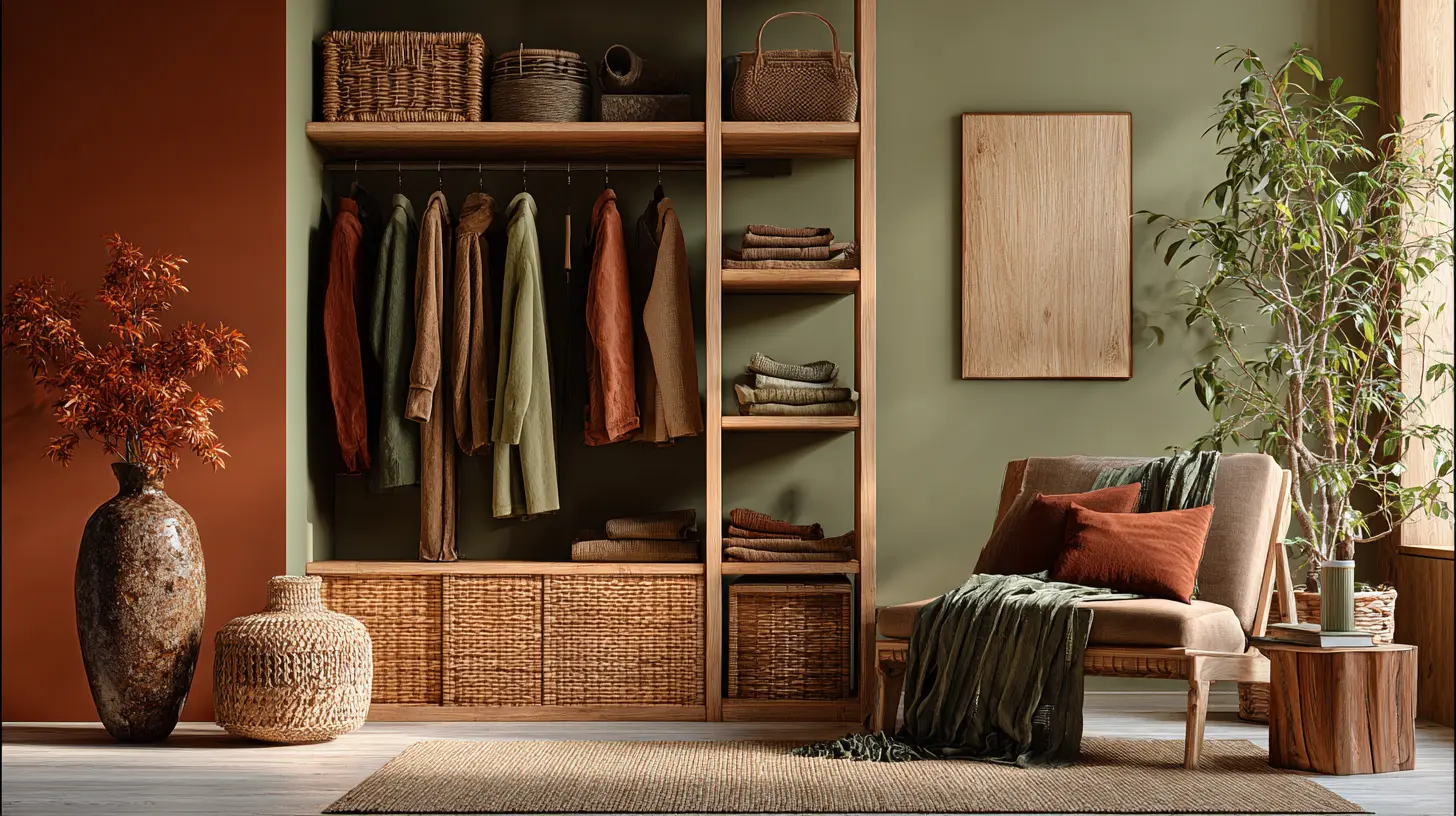
Earthy and Nature-Inspired Shades: Colors such as olive green, terracotta, and ochre are being incorporated into wardrobe designs, reflecting a growing trend toward biophilic design. These colors draw inspiration from nature and are used to create a warm, grounding environment. As consumers continue to seek comfort and calm within their living spaces, these earthy tones will become more prominent.
2.3 Color Pairings and Trends
The careful pairing of colors will be essential for 2025 wardrobe designs. Designers will play with contrasts, light-dark combinations, and complementary tones to create balanced and visually stimulating wardrobes.
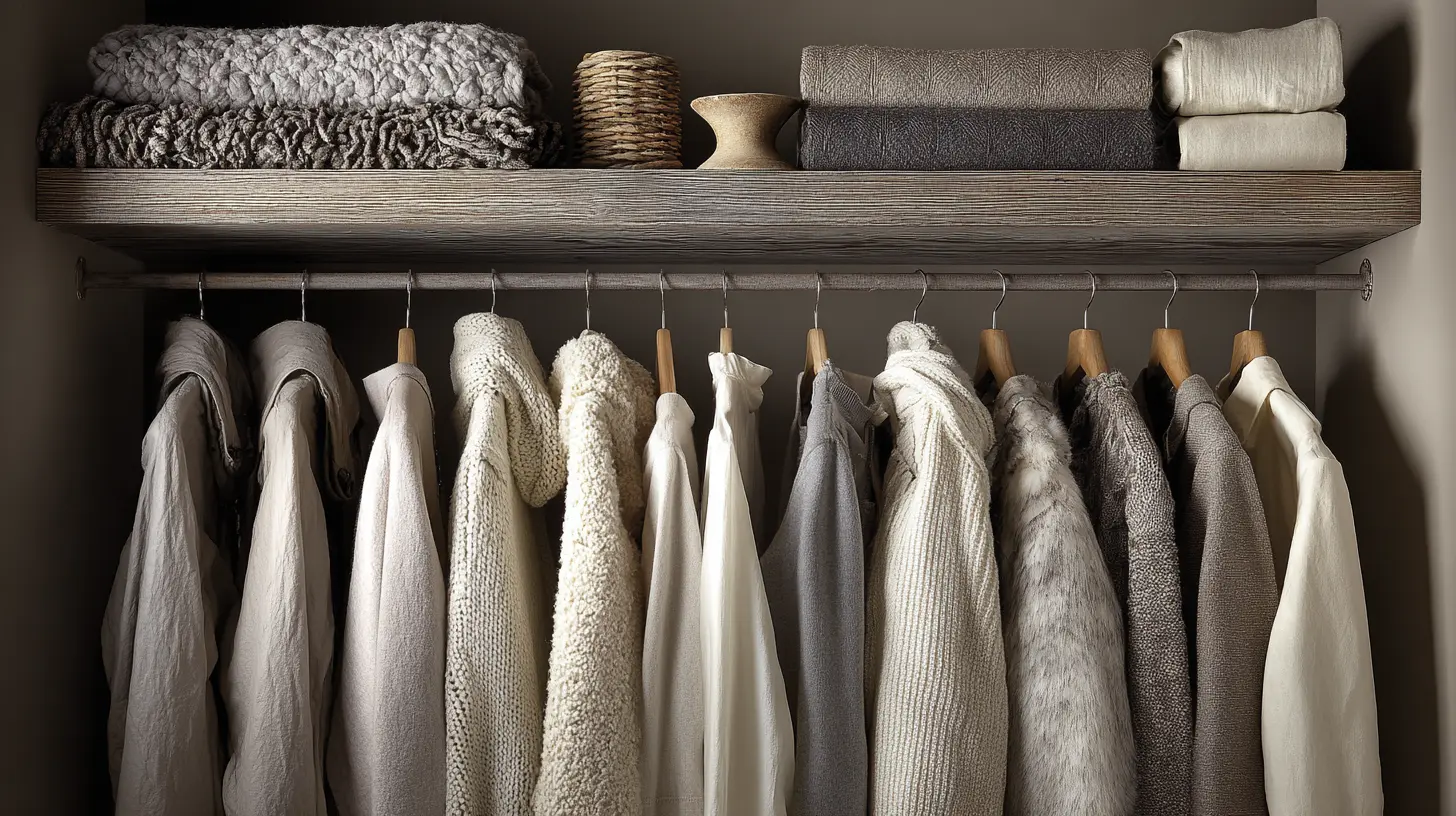
Monochromatic Schemes: The monochromatic color scheme, often seen in minimalist and contemporary designs, will continue to be a significant trend. A wardrobe with subtle gradients of a single color—such as varying shades of gray or beige—can create a harmonious, cohesive look while maintaining simplicity. This approach focuses on texture and form rather than overwhelming the space with excessive color variety.
Two-Tone Designs: Two-tone wardrobes are becoming increasingly popular, especially for clients looking to introduce some personality into their design. The mix of light and dark colors can add visual interest, and the contrasting tones can highlight the functionality of the wardrobe. For instance, a deep base with a lighter upper section or contrasting panels can break the monotony of solid color.
2.4 Eco-friendly and Natural Colors
As consumers become more eco-conscious, natural, earthy color schemes will continue to grow in popularity. The palette will reflect a desire for harmony with nature, using tones found in wood, stone, and natural landscapes.
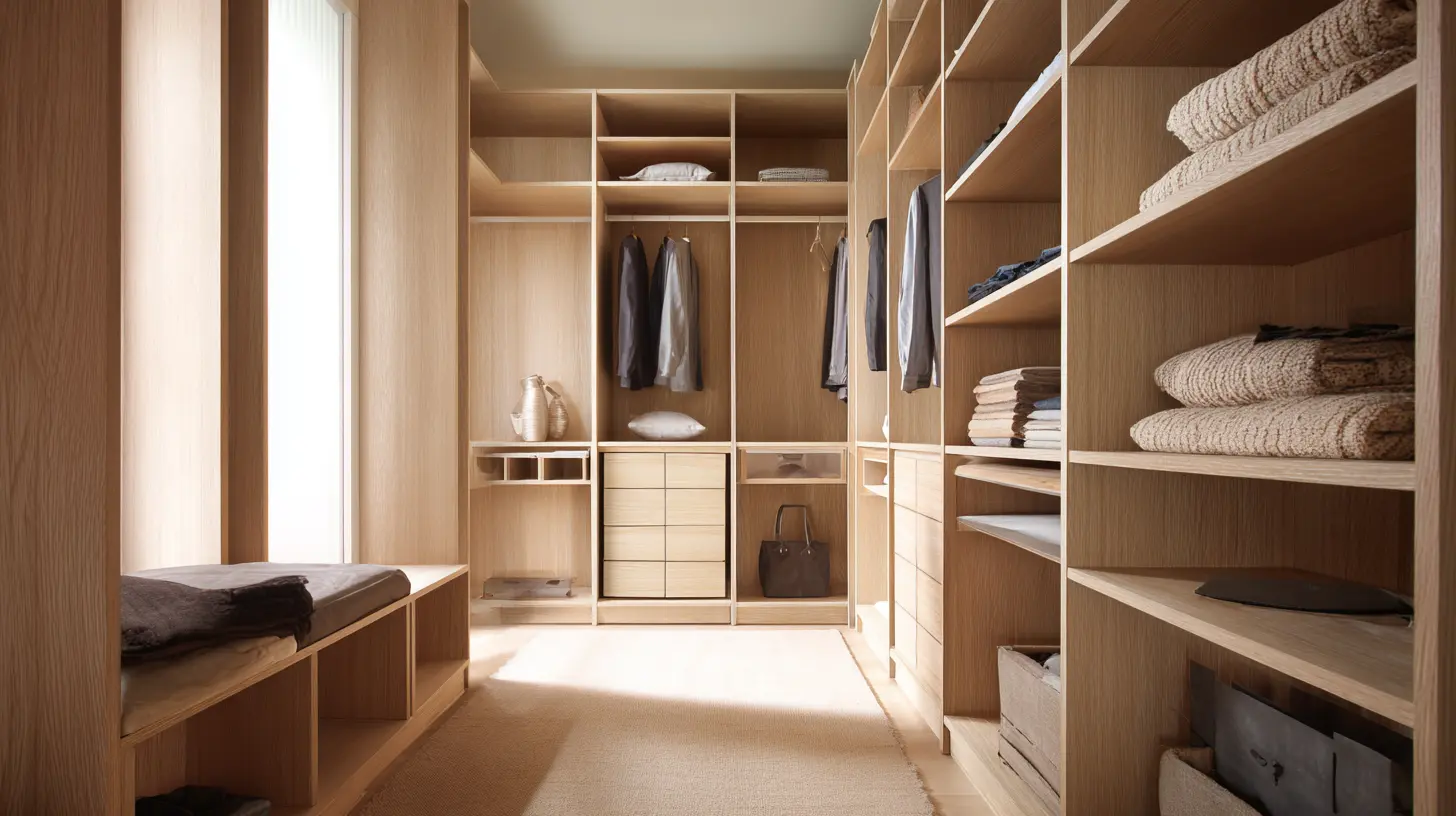
Wood Tones: Light wood tones, such as oak and ash, will be particularly popular, lending a timeless and organic feel to custom wardrobes. These shades are often used in combination with matte or soft-touch finishes to evoke a natural, minimalist aesthetic.
Earthy Hues: Shades such as terracotta, warm browns, and rich greens will cater to consumers who prioritize sustainability and wish to introduce organic, earthy elements into their home. These tones will be paired with sustainable materials like reclaimed wood and eco-friendly finishes to align with the green movement in home design.
3. Custom Wardrobe Materials Trends
The materials used in custom wardrobes have evolved to meet the demands of modern consumers who prioritize both aesthetics and functionality. In 2025, materials will not only be about beauty and style but also about sustainability, durability, and ease of maintenance.
3.1 Natural and Sustainable Materials
Sustainability continues to be at the forefront of consumers’ minds, and as a result, natural materials will take center stage in custom wardrobe design.

Solid Wood and Bamboo: Wood remains one of the most popular materials for custom wardrobes due to its warmth, versatility, and sustainability. Bamboo is gaining traction as a more eco-friendly alternative, as it grows rapidly and can be sourced responsibly. Light and medium wood tones, such as maple and ash, will continue to be sought after for their elegant and timeless appeal.
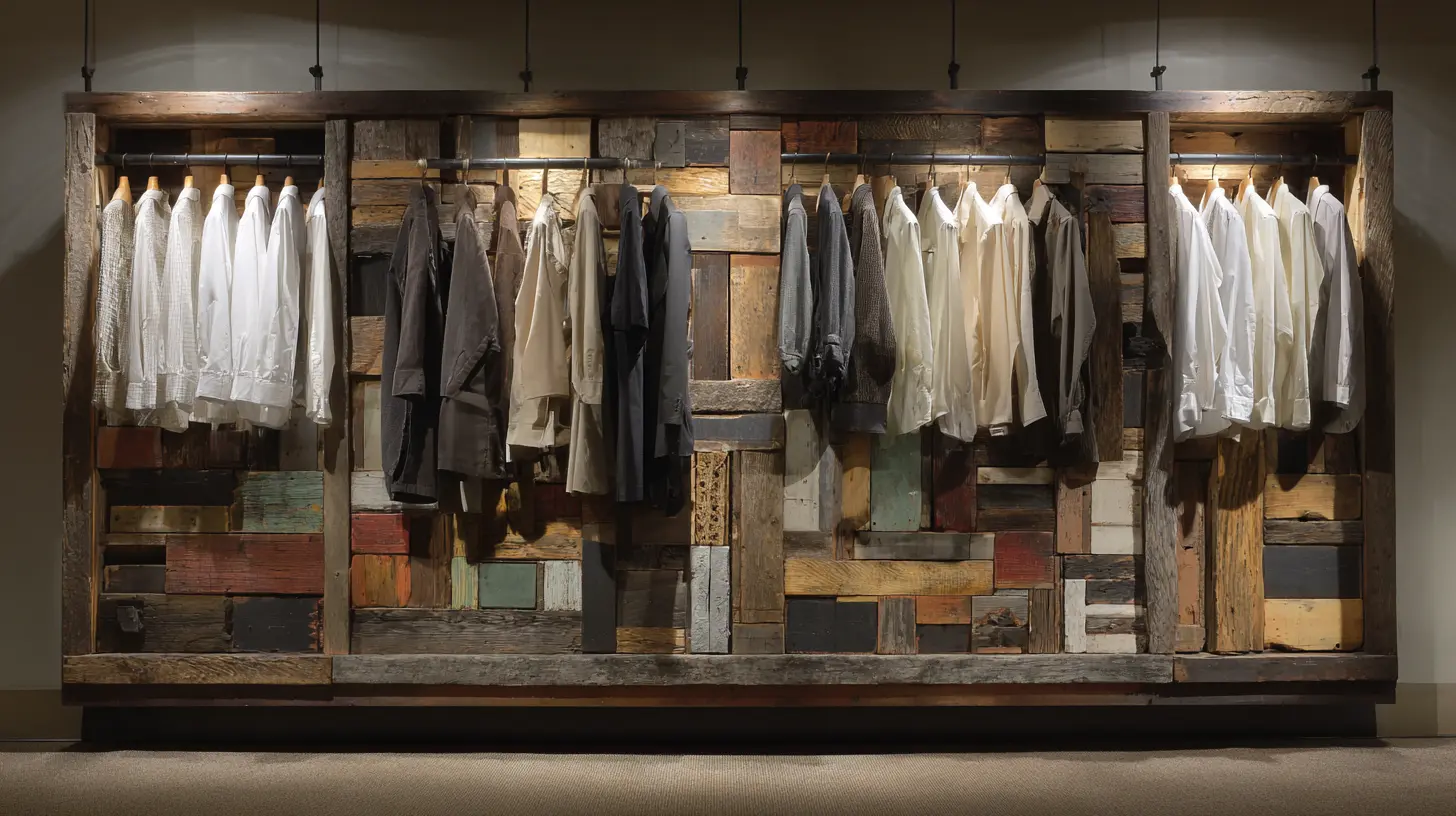
Recycled Materials: As part of the broader movement toward reducing environmental footprints, the use of recycled materials, including reclaimed wood, recycled plastic, and repurposed metal, will become more widespread. These materials offer consumers a way to design their wardrobes with a smaller ecological footprint while maintaining high quality and durability.
3.2 Innovative Composite Materials
Alongside natural materials, composite materials will gain popularity for their durability, affordability, and ability to replicate the look and feel of more expensive options.
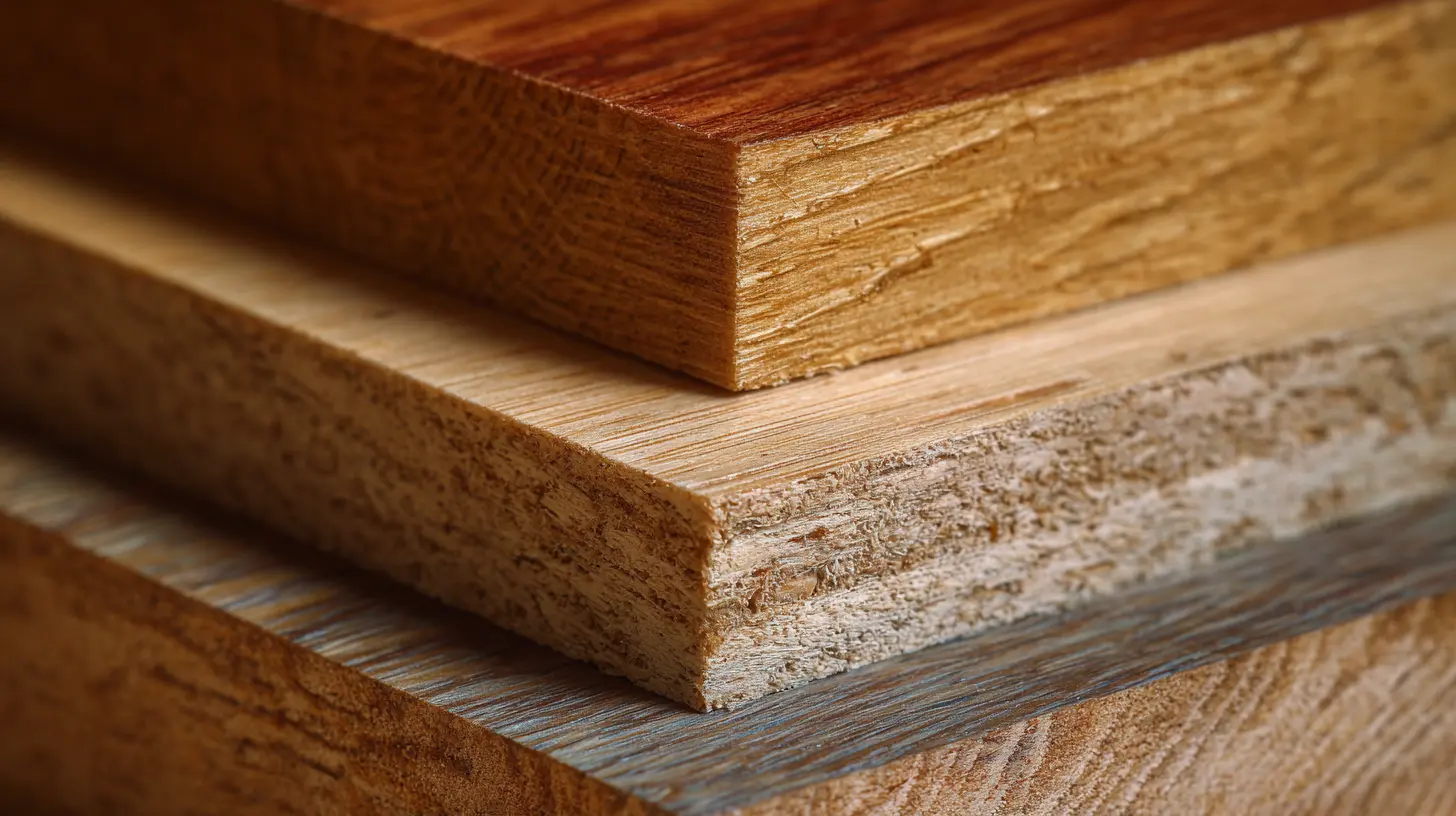
Engineered Wood: Plywood, MDF (Medium Density Fiberboard), and other engineered wood materials will be commonly used in custom wardrobes due to their cost-effectiveness and the ability to be shaped into a variety of designs. These materials are also more stable than solid wood, offering less expansion and contraction with changes in temperature and humidity.
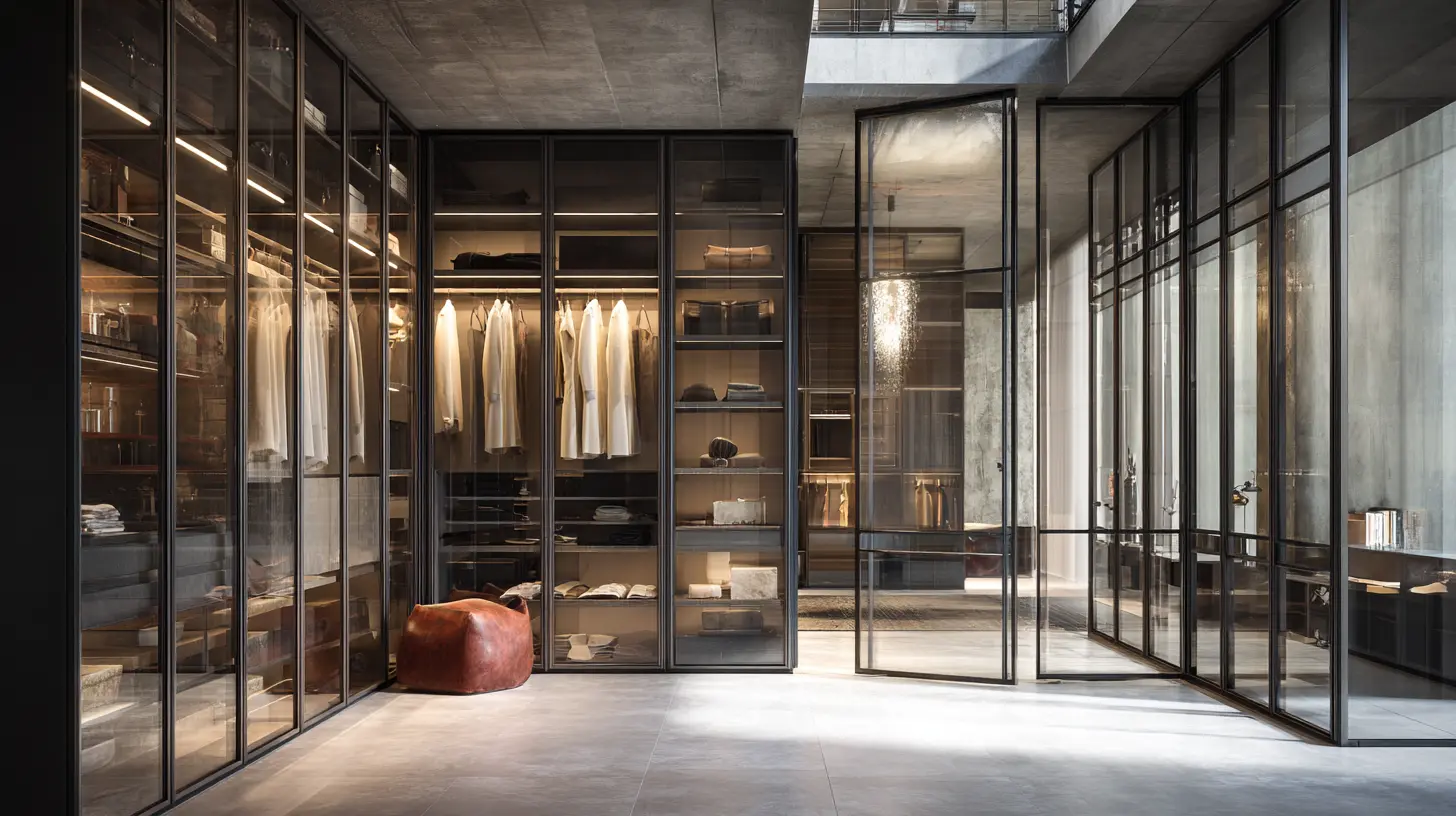
Glass and Metal: Glass, often used for doors and shelving, will continue to be a key material in custom wardrobe design. Glass adds an element of transparency and lightness to a wardrobe while showcasing the contents. Paired with metal framing, these materials provide an industrial aesthetic with modern appeal.
3.3 Technologically Advanced Materials
The integration of new materials that feature cutting-edge properties will continue to drive wardrobe design innovation.
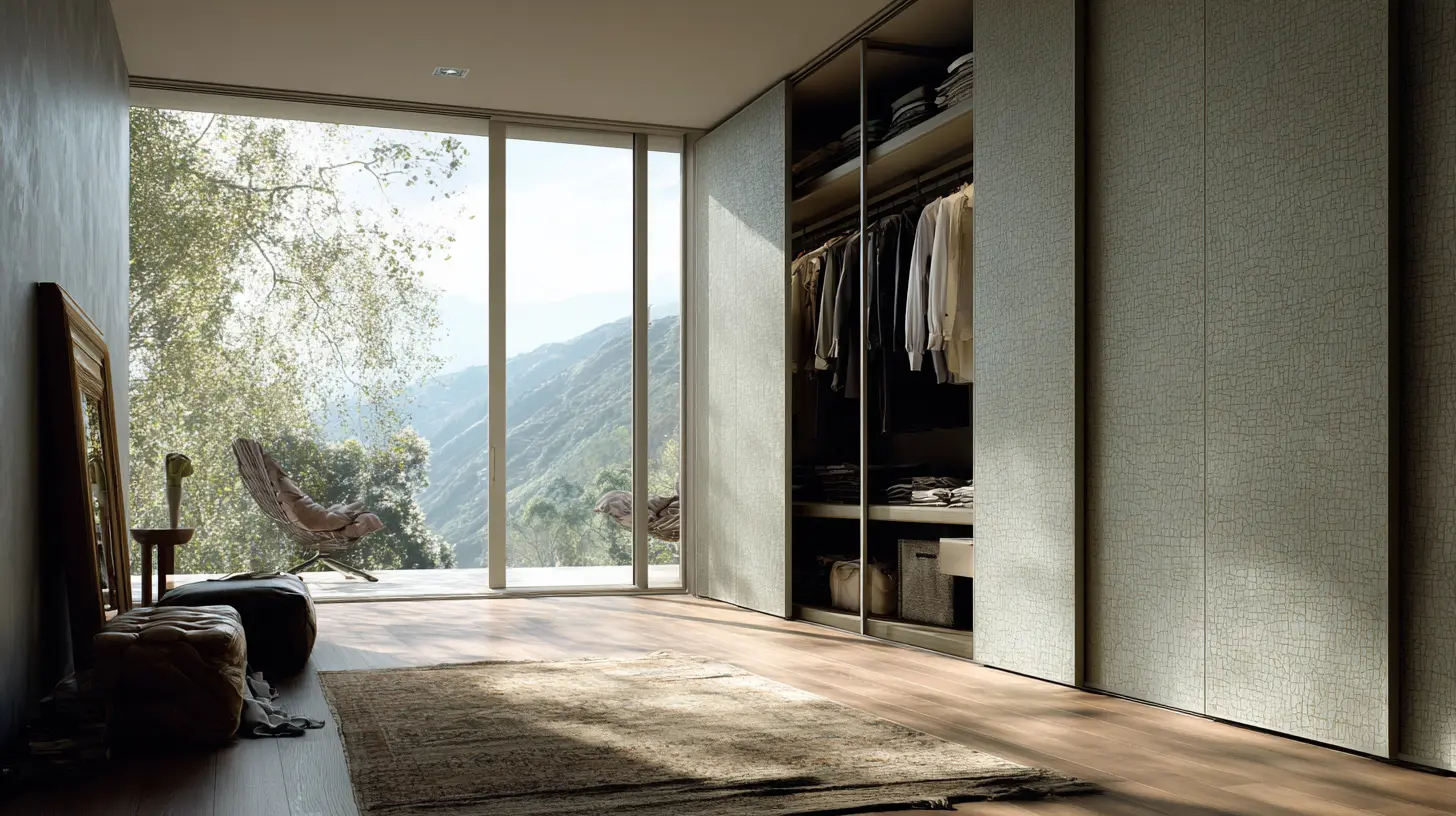
Scratch-Resistant and Anti-Fingerprint Coatings: As wardrobes become more interactive, especially with touch-sensitive technologies, the demand for easy-to-maintain surfaces will rise. Anti-fingerprint and scratch-resistant coatings will be incorporated into both metal and glass surfaces, reducing maintenance and ensuring long-lasting beauty.
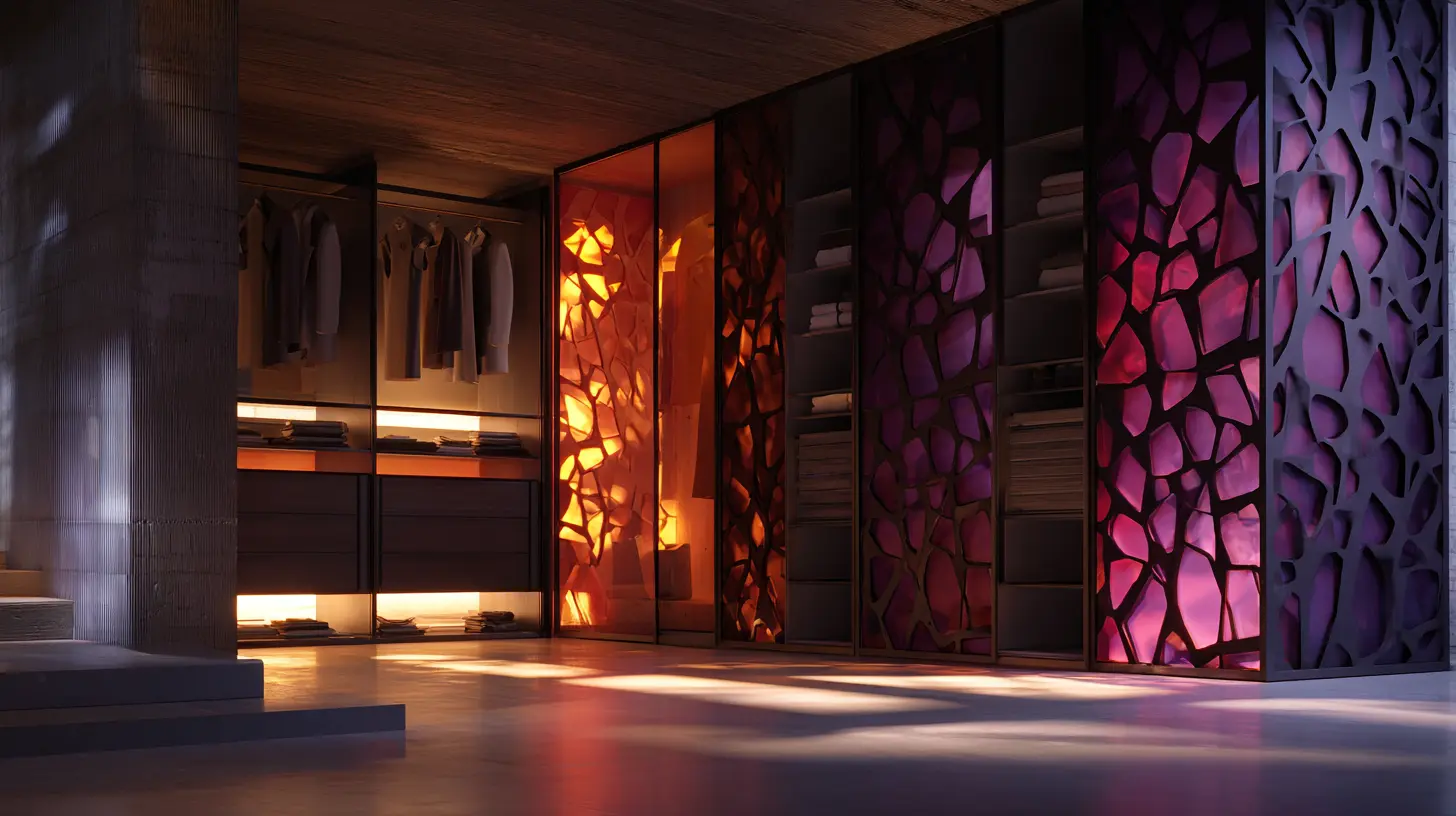
Smart Materials: The development of smart materials that respond to environmental changes will start making their way into wardrobe design. For instance, materials that change color based on temperature or lighting could be used to create wardrobes that evolve with the time of day or seasons, offering both functionality and a dynamic aesthetic.
4. Custom Wardrobe Finishes Trends
Finishes are essential in determining the texture, appearance, and maintenance of custom wardrobes. In 2025, finishes will be about achieving a perfect balance between style and practicality, with increased attention to sustainability and ease of care.
4.1 Matte vs. Glossy
While matte finishes have gained popularity over the past decade, glossy finishes are making a resurgence. Both have distinct characteristics that suit different design preferences.
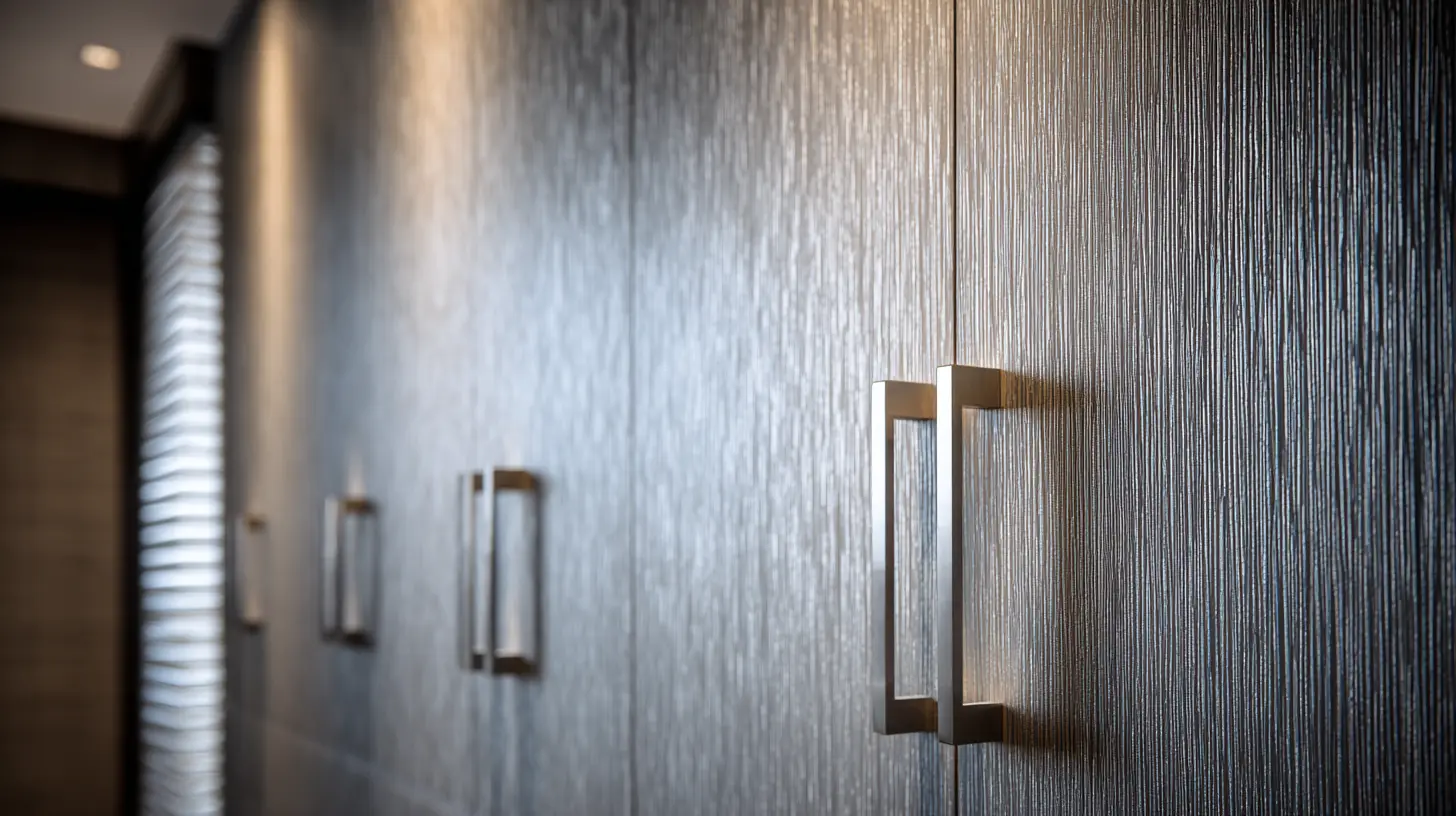
Matte Finishes: Matte surfaces will continue to be favored for wardrobes because of their soft, non-reflective quality that enhances subtle textures. They are also more resistant to showing fingerprints, making them a practical choice for high-touch areas like doors and handles.
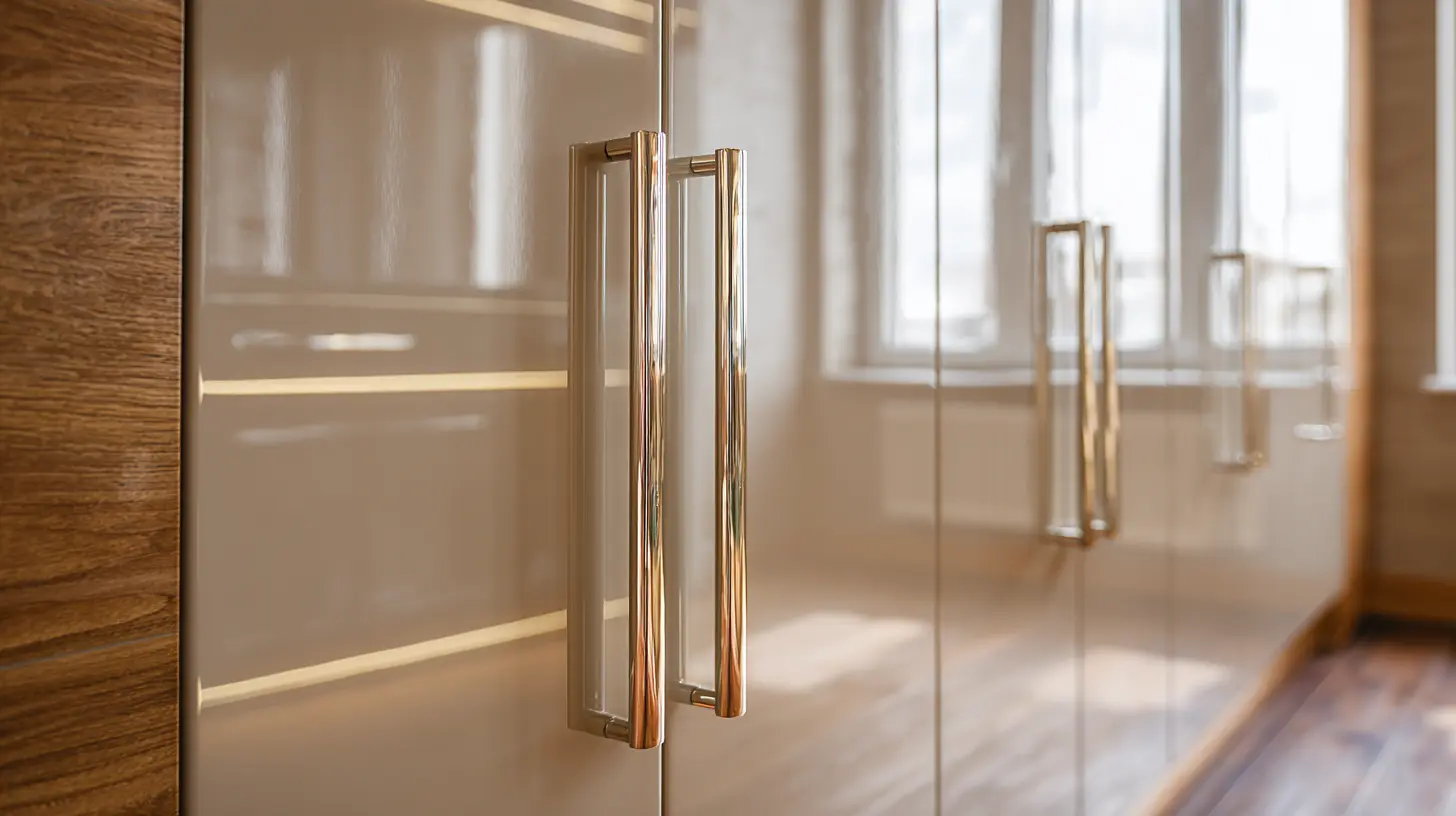
Glossy Finishes: Glossy finishes are returning to custom wardrobes, particularly in luxury designs where they can create a high-end, polished look. These finishes are reflective and will be used to highlight certain design elements such as metallic hardware or sleek, modern lines.
4.2 Natural Textures and Craftsmanship
Natural textures are making a strong comeback, especially as consumers seek authenticity in their living spaces. The intricate use of texture is elevating wardrobes into pieces of art.
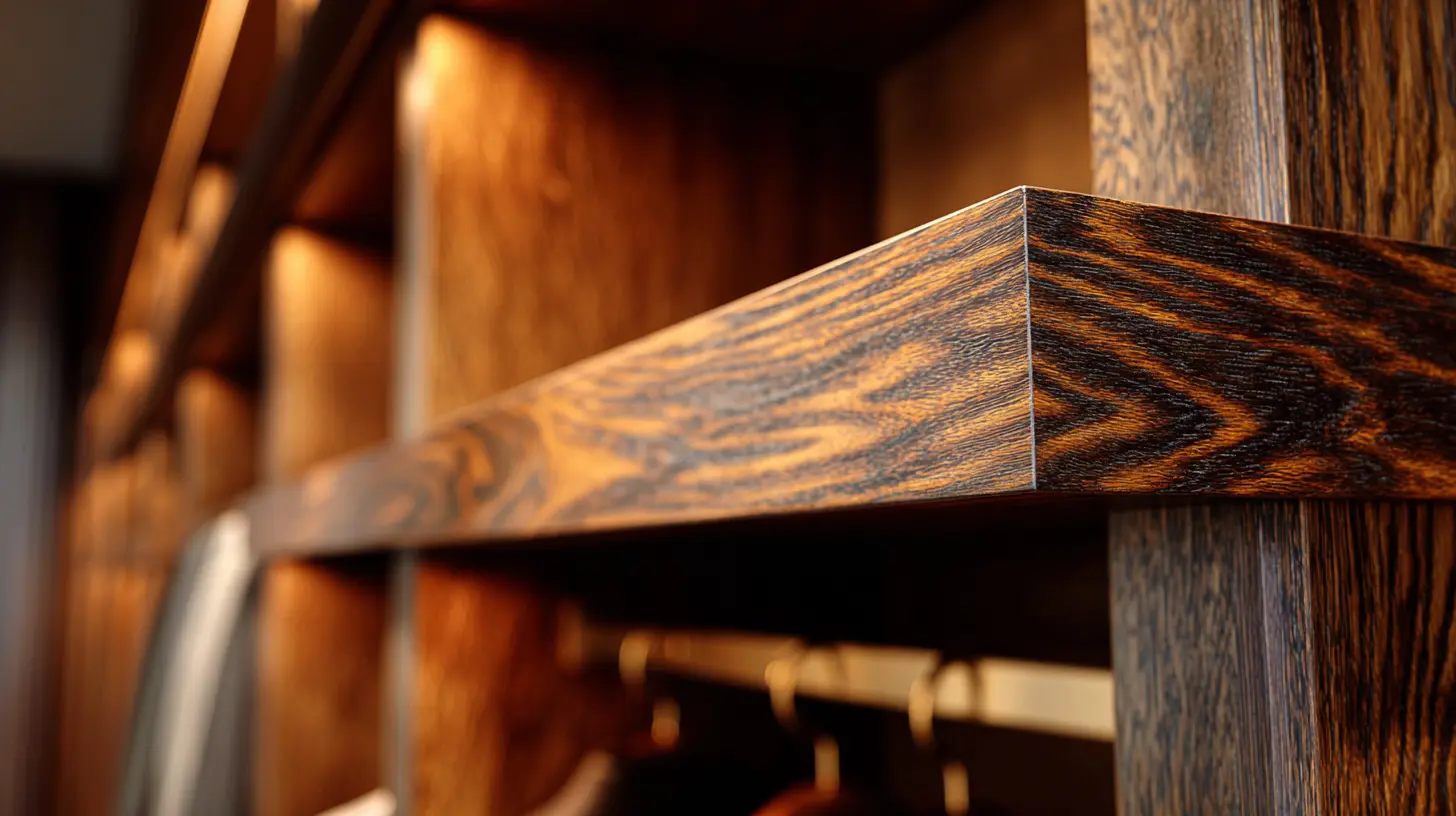
Wood Grain: The natural grain of wood will be highlighted in wardrobe designs, as it provides a unique and organic touch to the space. High-quality craftsmanship will be necessary to bring out the depth and richness of the wood’s texture, ensuring it remains a focal point in the wardrobe design.
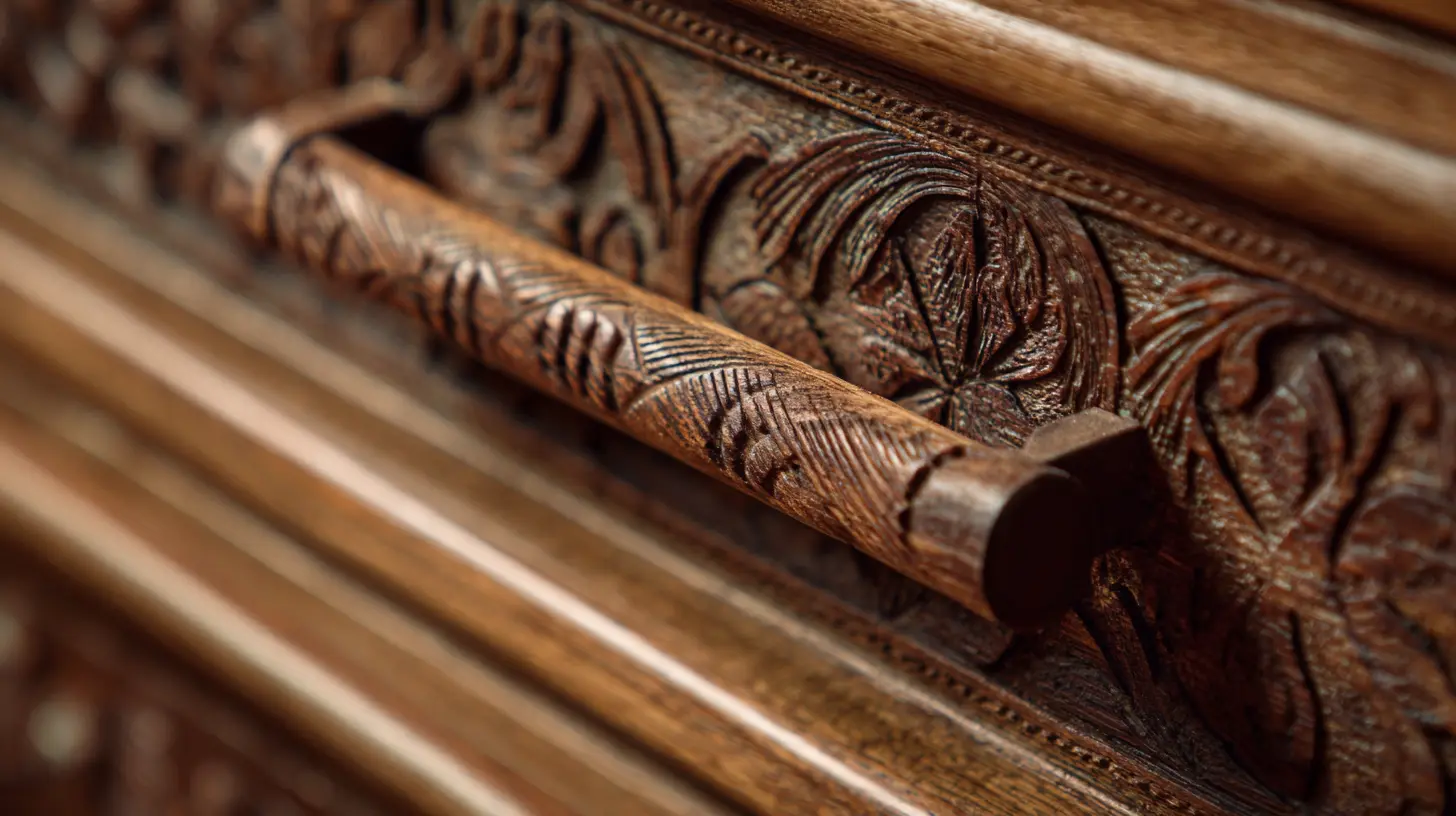
Handcrafted Elements: As part of the growing trend toward personalization, handcrafted details—such as carved wood, bespoke handles, or custom-made features—will become increasingly popular. These details add a sense of uniqueness and character to each wardrobe.
5. Custom Wardrobe Layouts Trends
The layout of custom wardrobes has evolved significantly over the past few years. As consumers seek more flexibility, efficiency, and personalization, wardrobe designs must cater to diverse living spaces and needs. 2025 will see a stronger emphasis on creating multifunctional, adaptable, and efficient wardrobe spaces that maximize storage and seamlessly integrate into modern homes.
5.1 Open and Modular Designs
One of the most significant shifts in wardrobe design is the move toward open and modular layouts. This trend represents a departure from traditional closed wardrobes, where all garments were hidden from view, to designs that showcase clothes, accessories, and shoes as part of the decor.
Open Wardrobe Systems: Open wardrobes are gaining traction because they offer easy access to items and create a more spacious feel. These systems often use shelves, rails, and hanging units, which allow for effortless display and organization. Open wardrobes help enhance the design aesthetic by turning the wardrobe into a decorative element of the room, not just a storage space.
Modular Designs: Modular wardrobe systems allow consumers to mix and match components to create a design tailored to their specific needs. These modular units include shelves, drawers, rails, and compartments that can be moved or adjusted according to the size and layout of the room. This adaptability is ideal for spaces that need versatile solutions, such as apartments or rooms with unusual layouts.
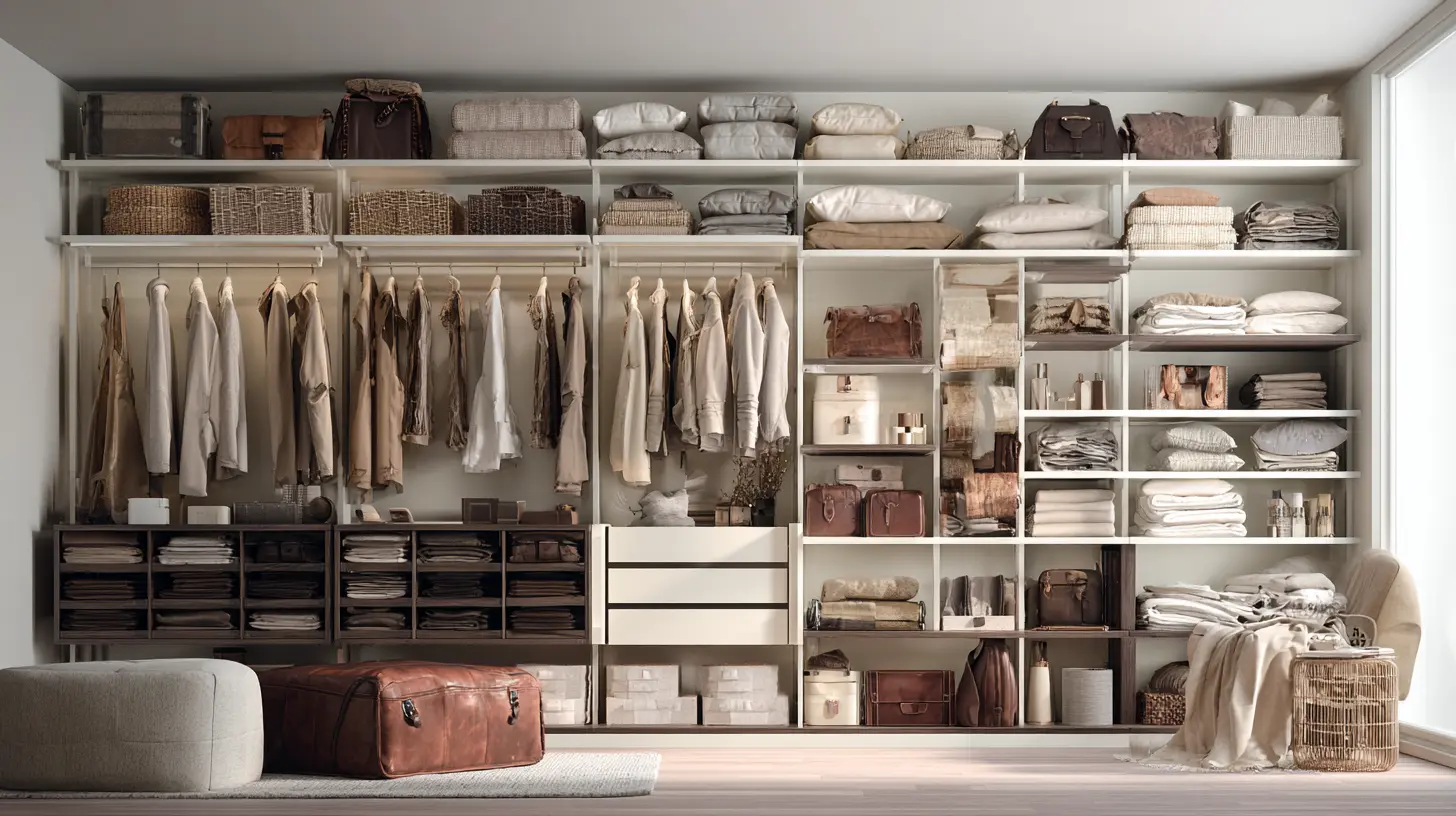
Flexible Storage Solutions: Flexibility remains a key consideration in 2025 wardrobe layouts. Adjustable shelving, movable rails, and custom inserts will become more common, allowing users to reorganize their storage spaces to fit seasonal needs, changes in lifestyle, or even different types of clothing.
5.2 Multi-functional Spaces
Multi-functionality will become a primary characteristic of wardrobes in 2025. Consumers are increasingly seeking designs that can serve more than just one purpose. A wardrobe in 2025 will often double as a makeup station, dressing area, or even a home office, depending on the available space.
Wardrobes with Integrated Furniture: Many custom wardrobes in 2025 will feature built-in desks, dressing tables, or vanity areas. This integration creates a seamless look while providing more functionality in the same space. A wardrobe might include a small desk with a mirror for those with limited space but still requiring a home office corner.
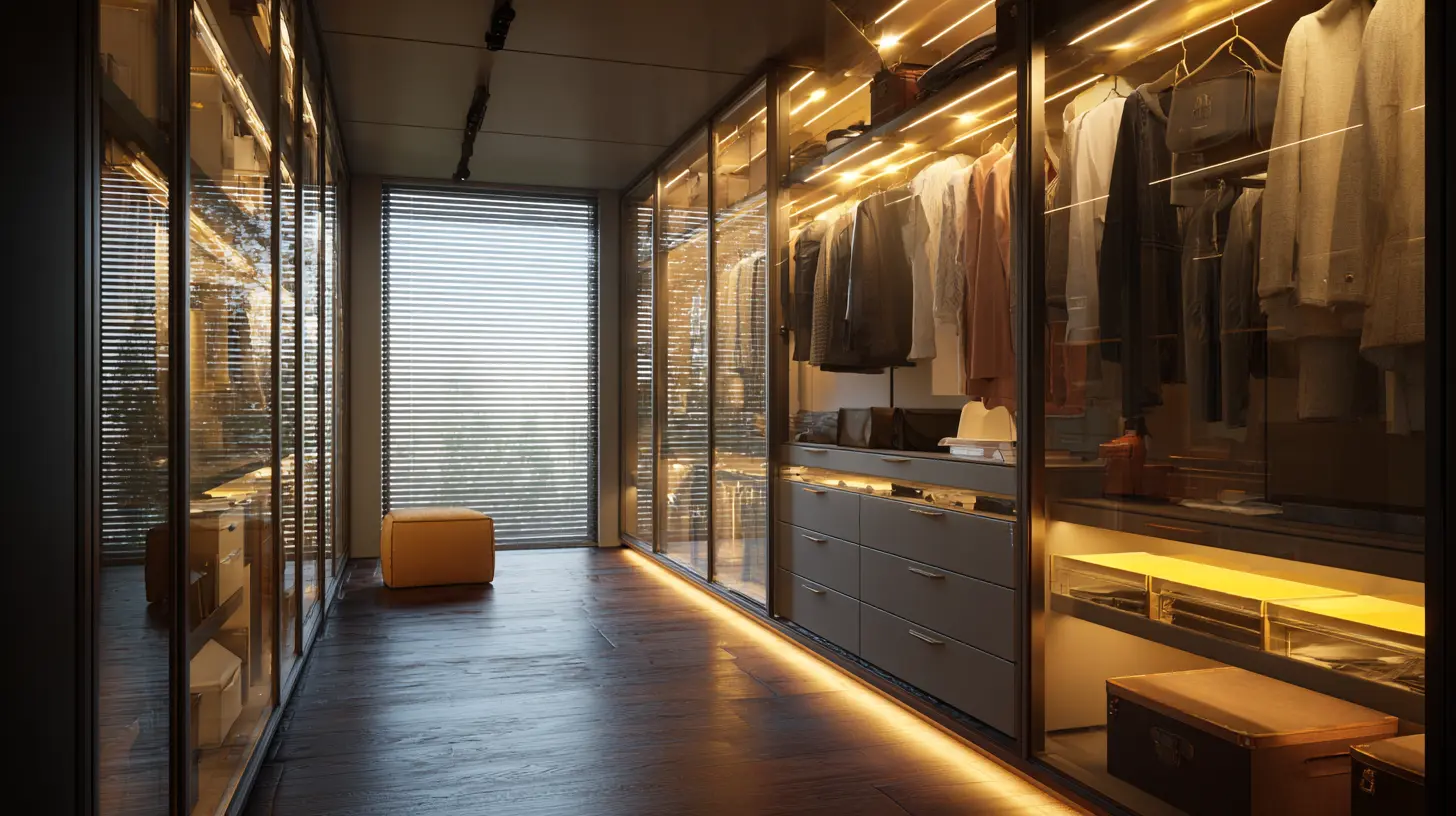
Incorporating Technology: The incorporation of smart technology into wardrobes is expanding. Features like automatic lighting, sensor-based drawers, and mirrors with built-in lighting or touch screens can transform a wardrobe into a multifunctional unit. These additions not only add to the functionality but also enhance the overall luxury feel.
5.3 Hidden and Smart Layouts
In the coming years, wardrobe designs will increasingly feature hidden compartments and smart organization solutions. These “invisible” storage solutions allow for the concealment of less frequently used items or preserve the clean lines of a minimalist design.
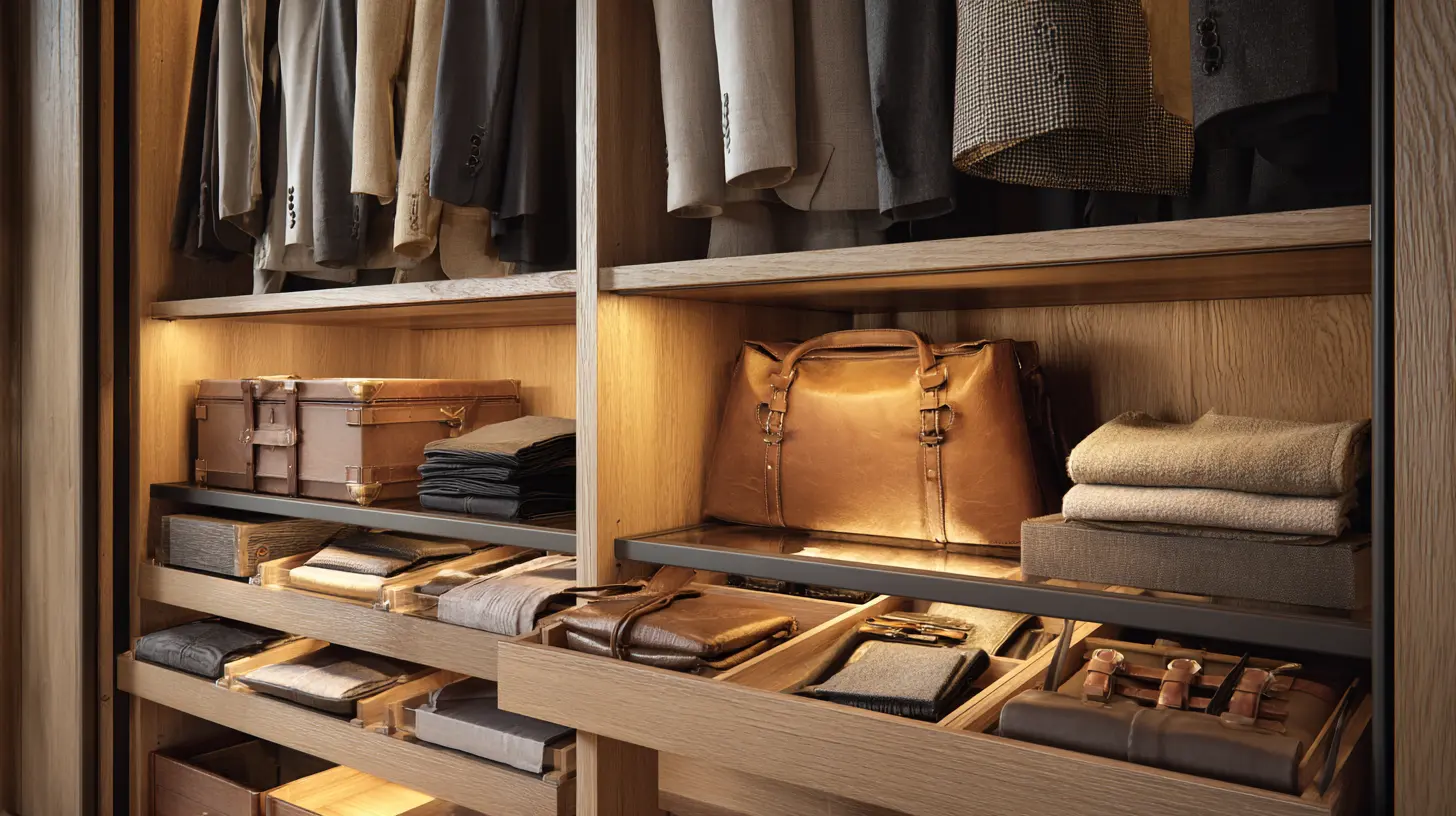
Hidden Compartments: Many high-end wardrobes will integrate hidden compartments for storing items like accessories, shoes, or even seasonal clothing. Hidden drawers, rotating racks, and retractable shelving units will provide accessible yet discreet storage solutions.
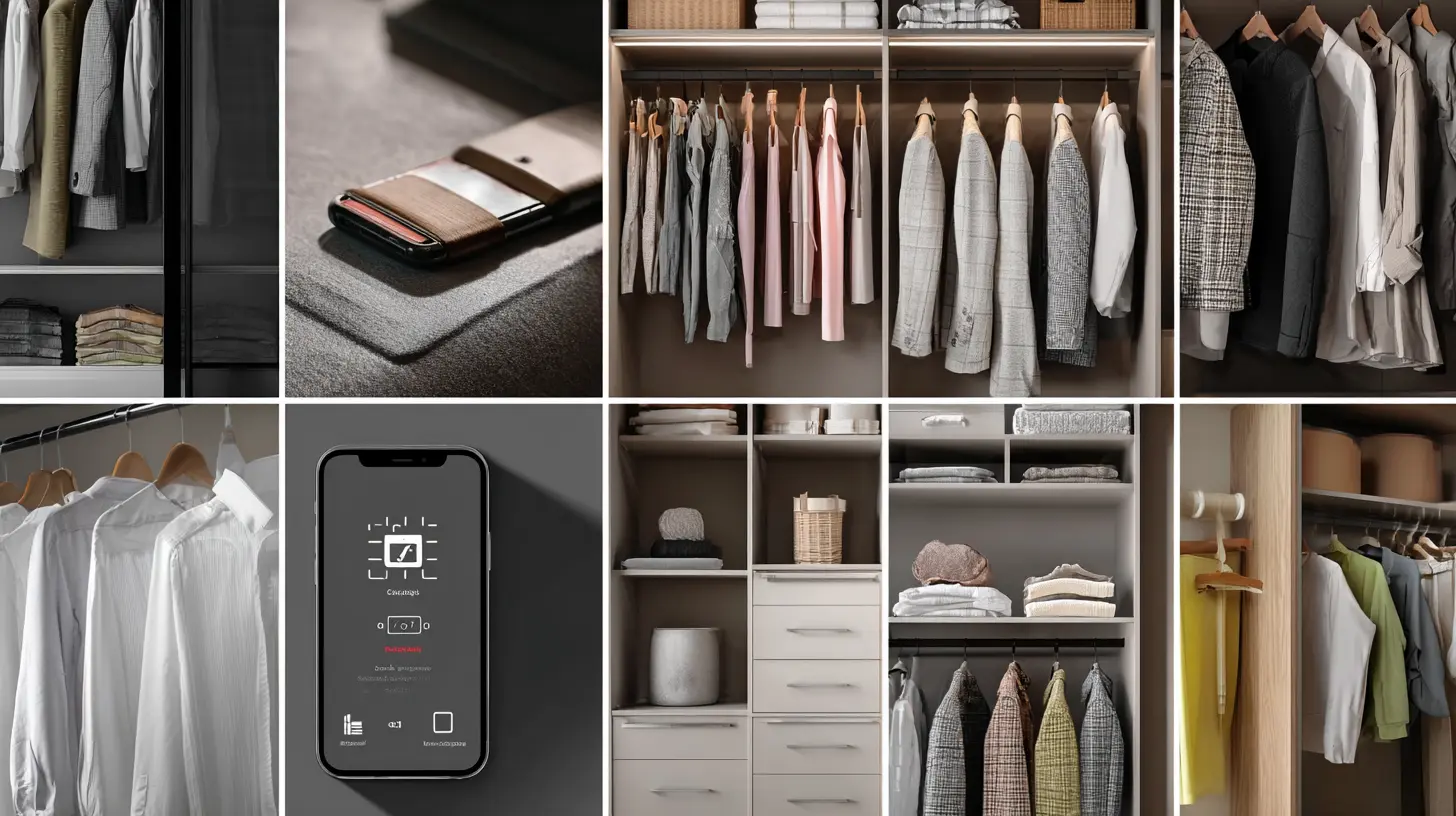
Smart Organizational Systems: The integration of smart organizational systems will enhance wardrobe functionality. These systems might include apps that track the wardrobe’s contents, suggest outfit combinations based on the weather or occasion, and even alert users when certain items need to be cleaned or replaced.
6. Custom Wardrobe Style Trends
Wardrobe styles will continue to evolve, blending aesthetics with functionality. As fashion trends continue to influence home decor, the wardrobe will be a key piece of the modern bedroom. In 2025, we expect to see a rise in minimalist, industrial, and luxury designs, among others.
6.1 Modern Minimalism
Minimalism continues to dominate interior design, and wardrobes are no exception. The clean, simple lines and lack of unnecessary details allow for an uncluttered, serene atmosphere.
Streamlined Designs: Minimalist wardrobes will feature sleek, clean lines with minimal handles and subtle hardware. Sliding doors, push-to-open mechanisms, and concealed fittings will ensure a smooth and seamless appearance, eliminating any clutter in the design.
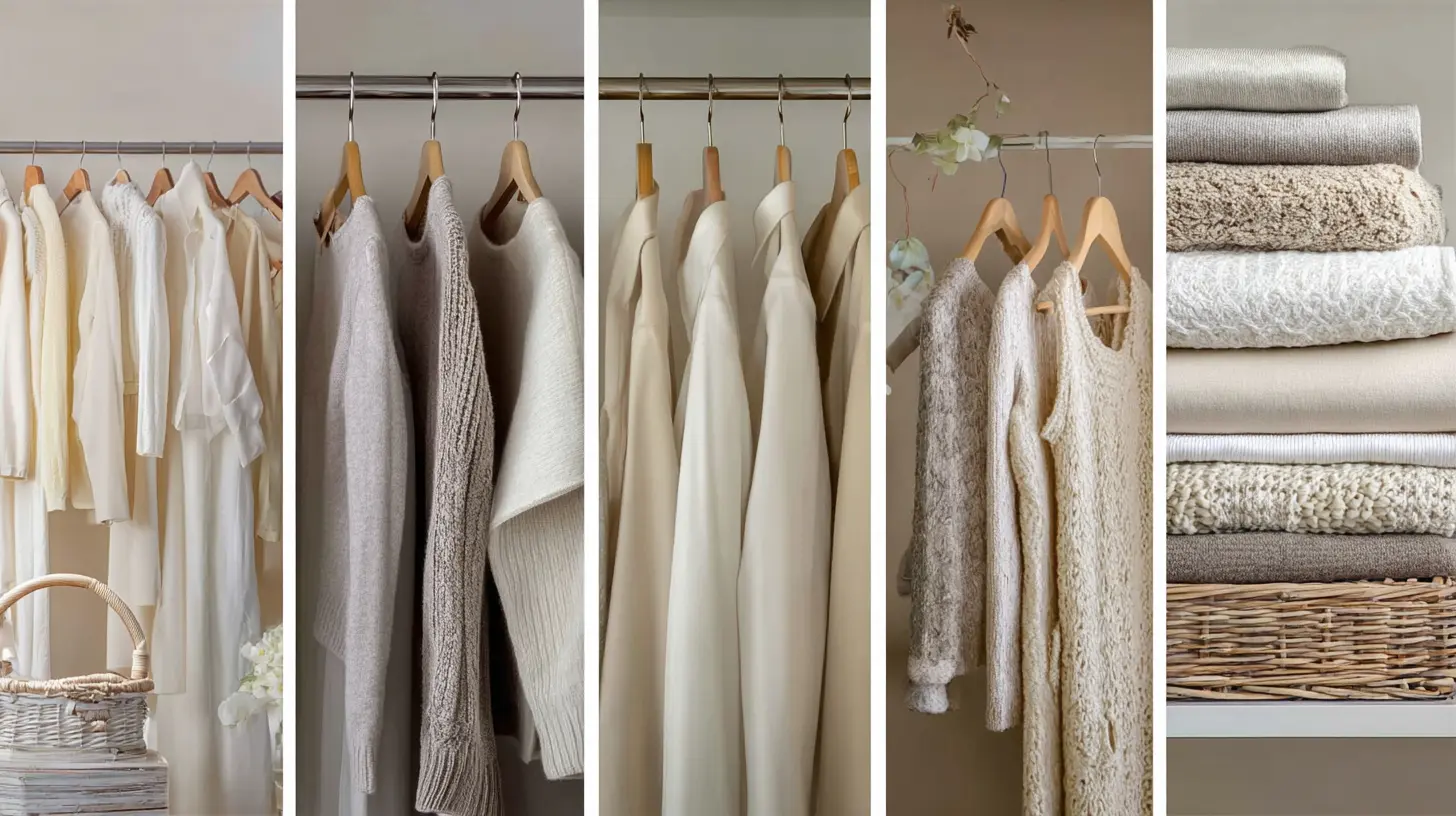
Neutral Palettes: Neutral colors, such as white, gray, and beige, will continue to be popular for minimalist wardrobes. These tones create a timeless and elegant aesthetic that complements various interior styles and ensures the wardrobe doesn’t overpower the room’s decor.
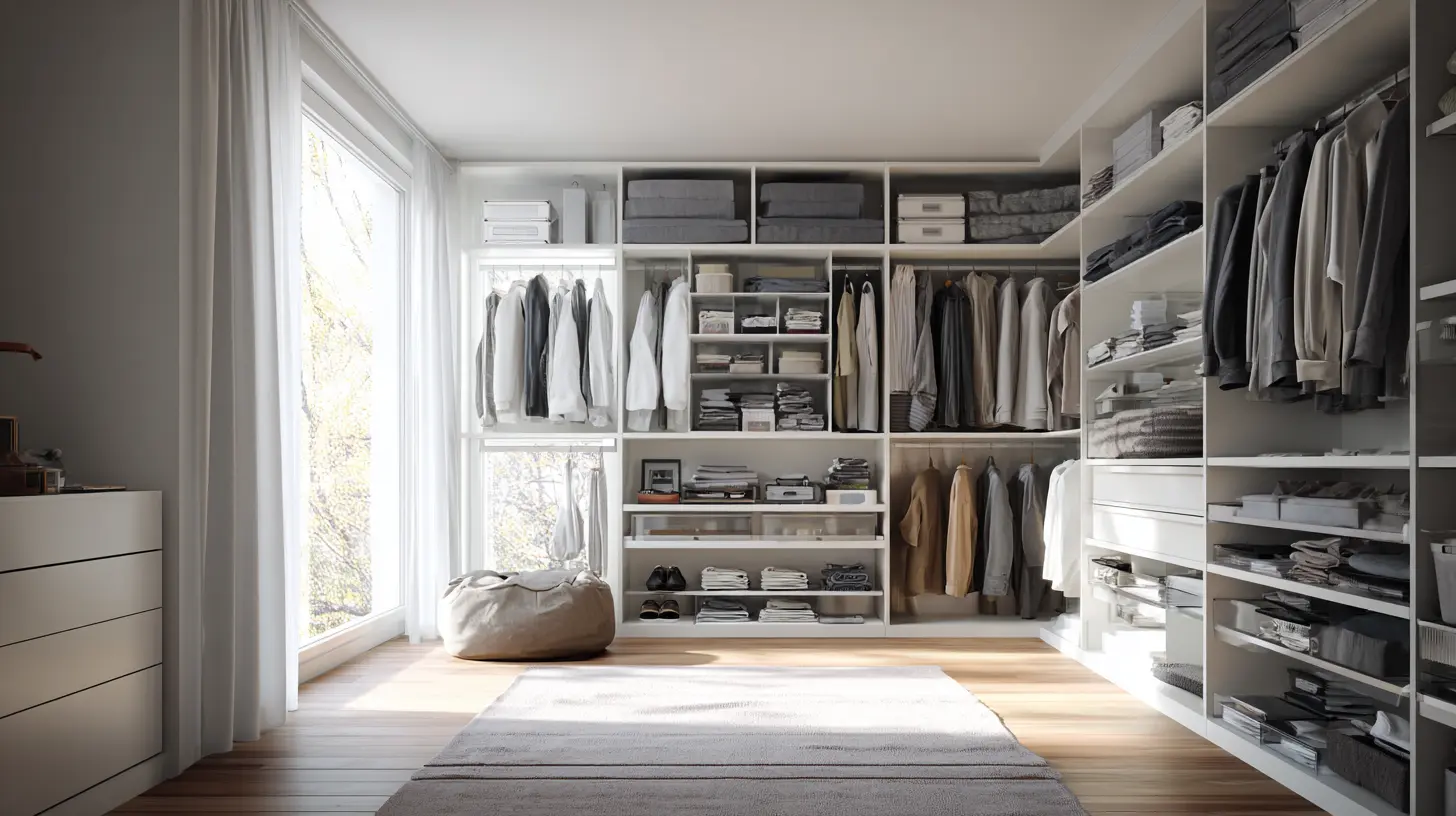
Simplicity in Function: Functionality in minimalist designs will be refined to ensure that the wardrobe’s components are optimized for ease of use. Designers will focus on maximizing storage without adding complexity, using pull-out drawers, adjustable shelving, and built-in organizers.
6.2 Industrial Style
Industrial style, characterized by raw materials and exposed structural elements, has become a popular trend in modern home design. This rugged and utilitarian style is perfect for custom wardrobes that aim to blend practicality with bold, distinctive aesthetics.
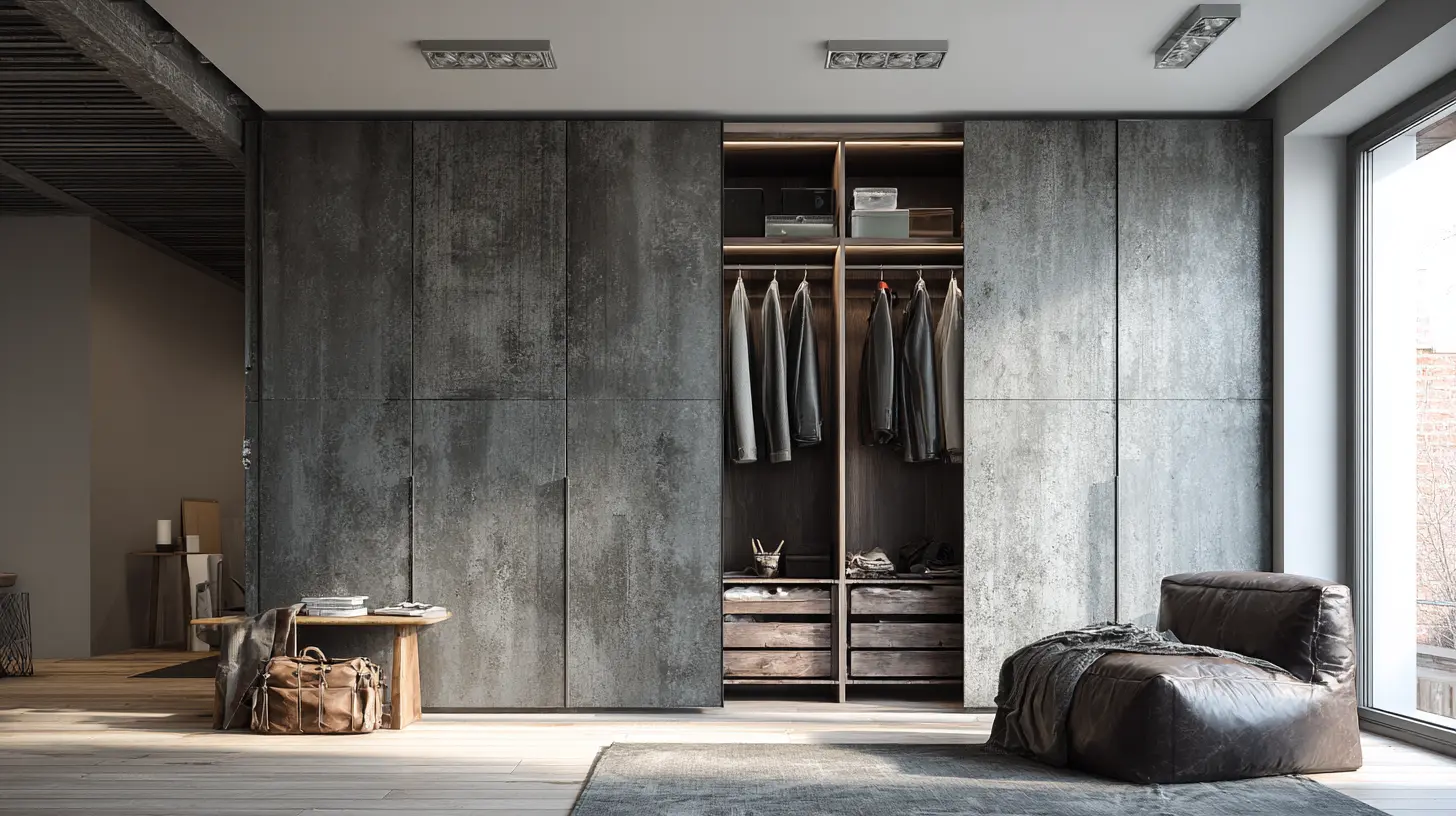
Exposed Metals and Concrete: Industrial wardrobes will feature materials like steel, iron, and concrete, often left in their natural, unrefined state. These materials are durable and offer a tough, masculine vibe that appeals to many homeowners looking for something more robust than traditional designs.
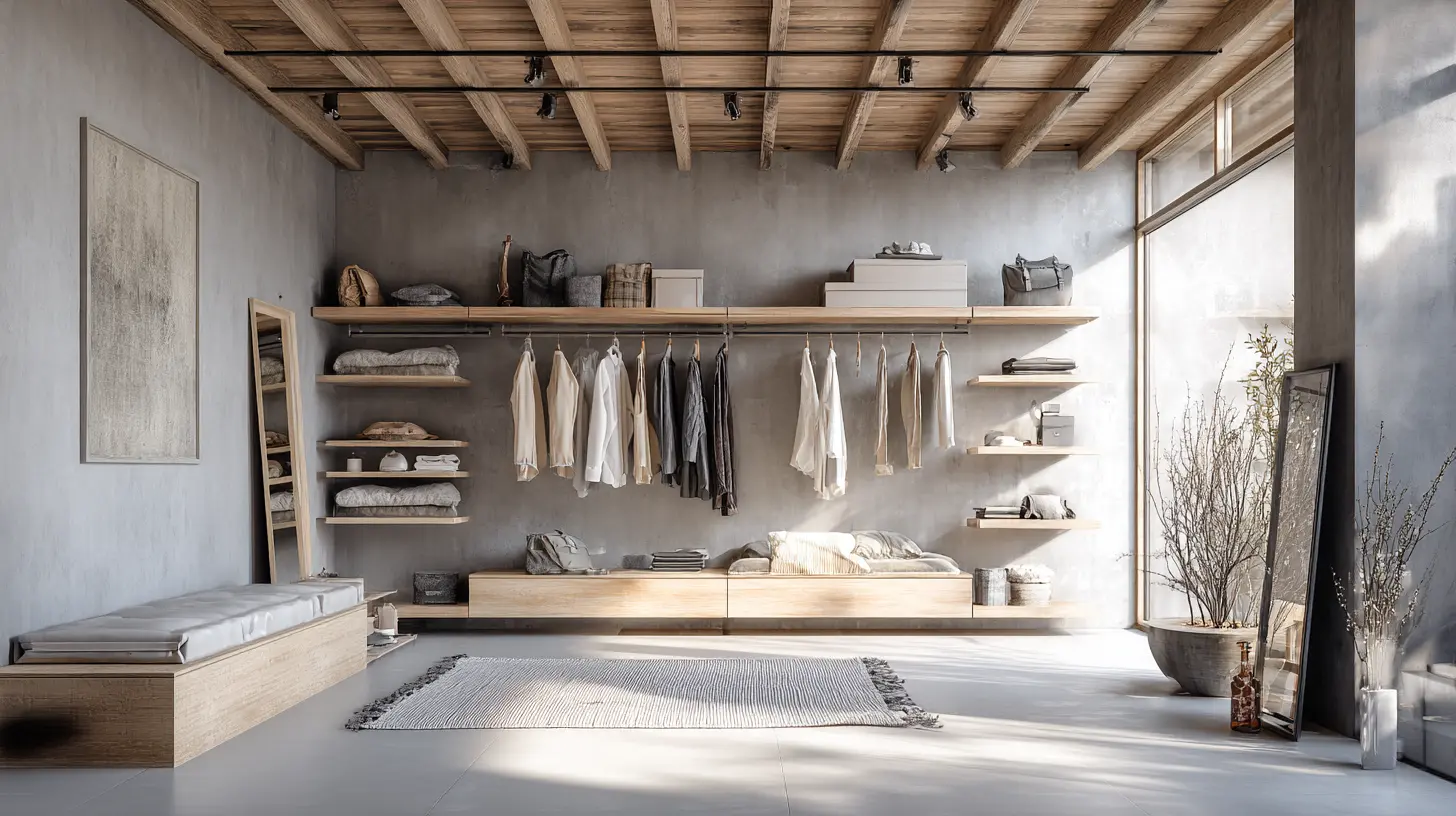
Minimalist Design with a Rough Edge: Unlike sleek, modern minimalist wardrobes, industrial wardrobes will have a more unfinished look. Exposed beams, visible shelving units, and unfinished wood surfaces will create a sense of authenticity and rugged beauty. Wardrobes with concrete or metal accents can help integrate the wardrobe with an industrial-style home.
6.3 Retro and Vintage
2025 will witness a resurgence of retro and vintage elements, as homeowners look to blend old-world charm with modern functionality. This trend will mix traditional designs with modern technology and storage solutions.
Bold Patterns and Colors: Retro wardrobes will feature bold color schemes, such as mustard yellow, teal, and deep reds, which were prominent in the 60s and 70s. These colors will be paired with funky patterns and retro hardware, giving wardrobes a nostalgic yet stylish vibe.
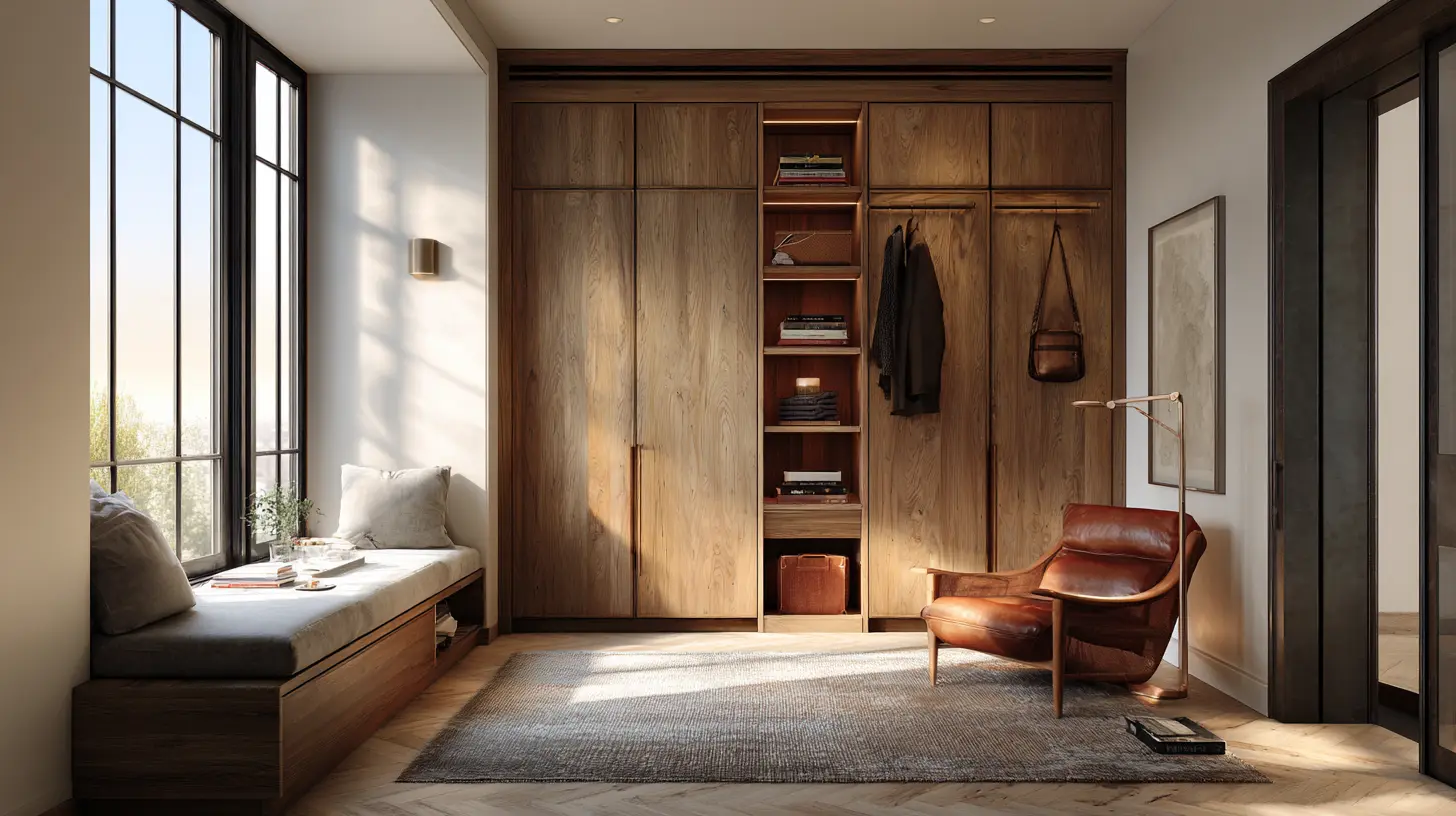
Mid-Century Modern: Mid-century modern design, characterized by clean lines, functional forms, and organic shapes, will see a significant comeback. Wardrobes inspired by this era will incorporate natural wood, subtle curves, and metal details that offer both form and function.
6.4 Luxury and High-End Customization
Luxury wardrobes in 2025 will focus on exclusivity, quality, and refinement. The desire for opulence and personalization will drive the demand for high-end wardrobes that go beyond traditional storage units.
Premium Materials: High-end wardrobes will feature premium materials like marble, exotic woods, and leather. These luxurious finishes, paired with advanced technology such as integrated lighting systems, mirrors with built-in screens, and automated shelving, will appeal to affluent consumers seeking the ultimate wardrobe experience.
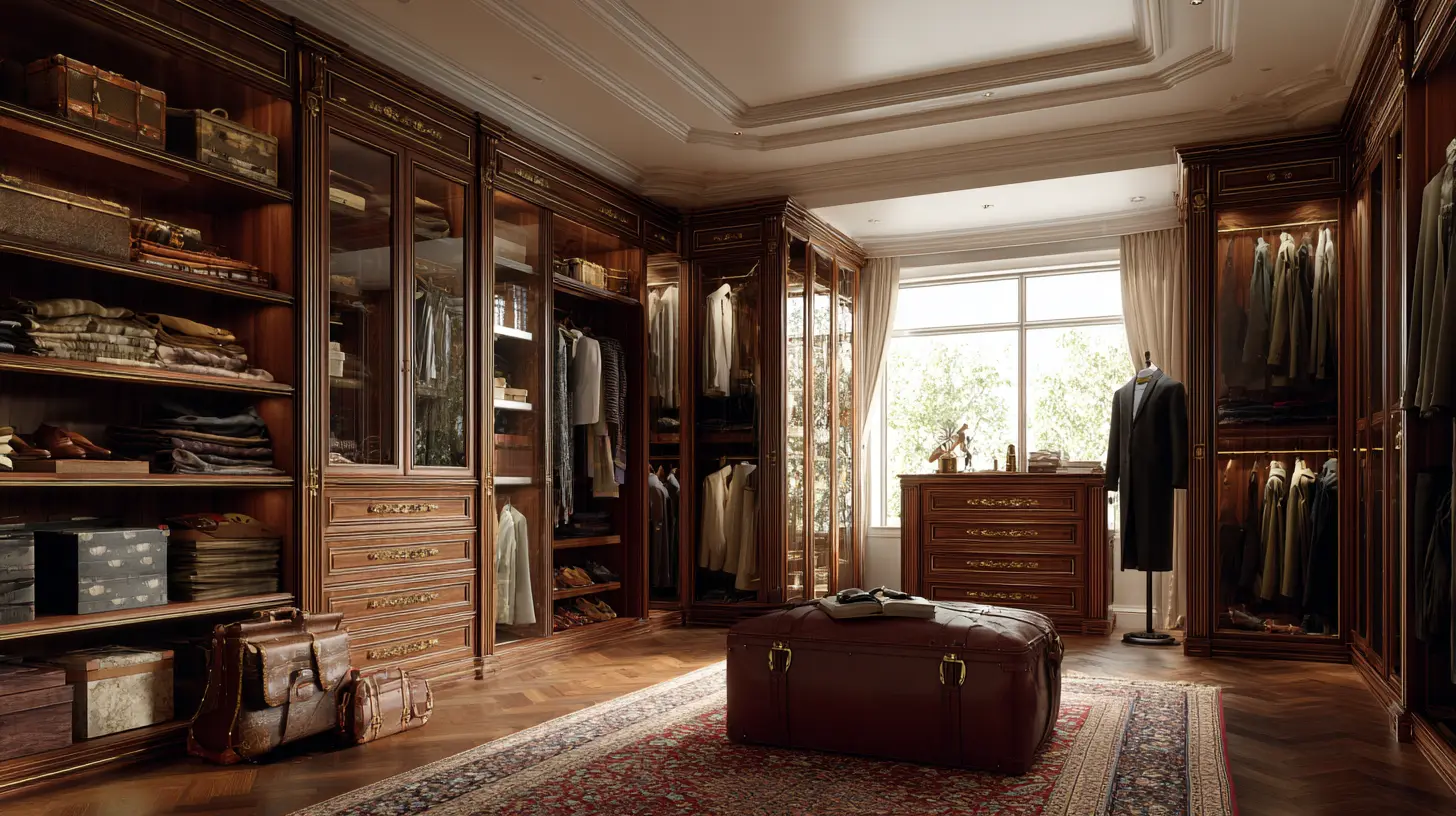
Personalization and Bespoke Features: Customization will be key in luxury wardrobes. Consumers will demand wardrobes that fit their exact specifications, with bespoke options for compartmentalized storage, unique hardware, and tailored finishes. Some wardrobes may even be designed around specific clothing items, such as specialized shoe racks or space for tailored suits.
7. Smart Wardrobes
Smart wardrobes are revolutionizing the way consumers interact with their storage spaces. By integrating technology with storage systems, wardrobes can become more efficient, interactive, and personalized.
7.1 Integration with Smart Home Systems
As the smart home trend continues to grow, wardrobes are being integrated with broader home automation systems. Smart wardrobes will sync with lighting, climate control, and security systems to create a seamless and intelligent living environment.
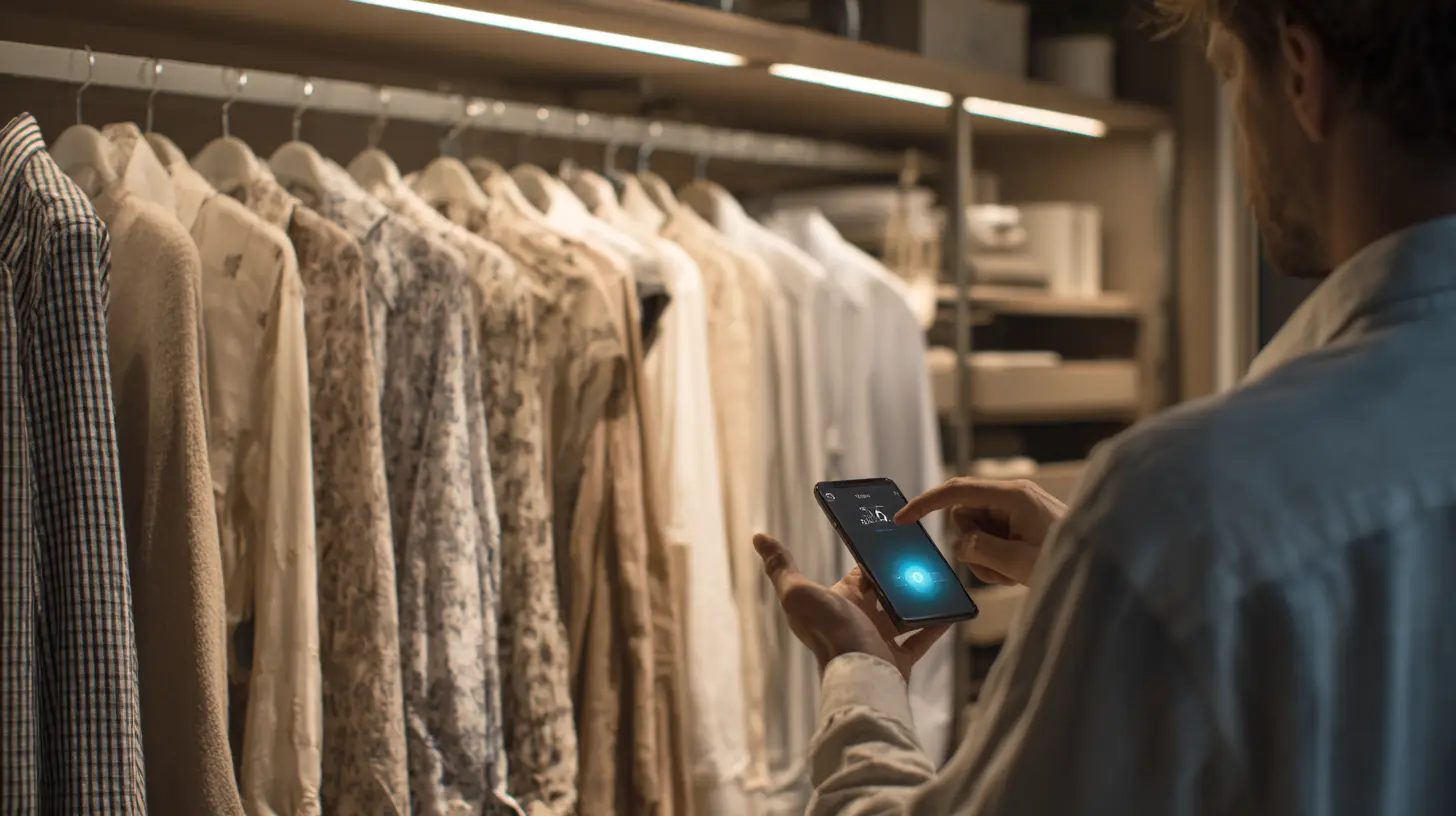
Voice Control and App Integration: Smart wardrobes will be controllable via voice commands or through mobile apps. Homeowners can adjust lighting, open drawers, or even retrieve clothing suggestions via their smartphones or voice assistants like Alexa or Google Assistant.
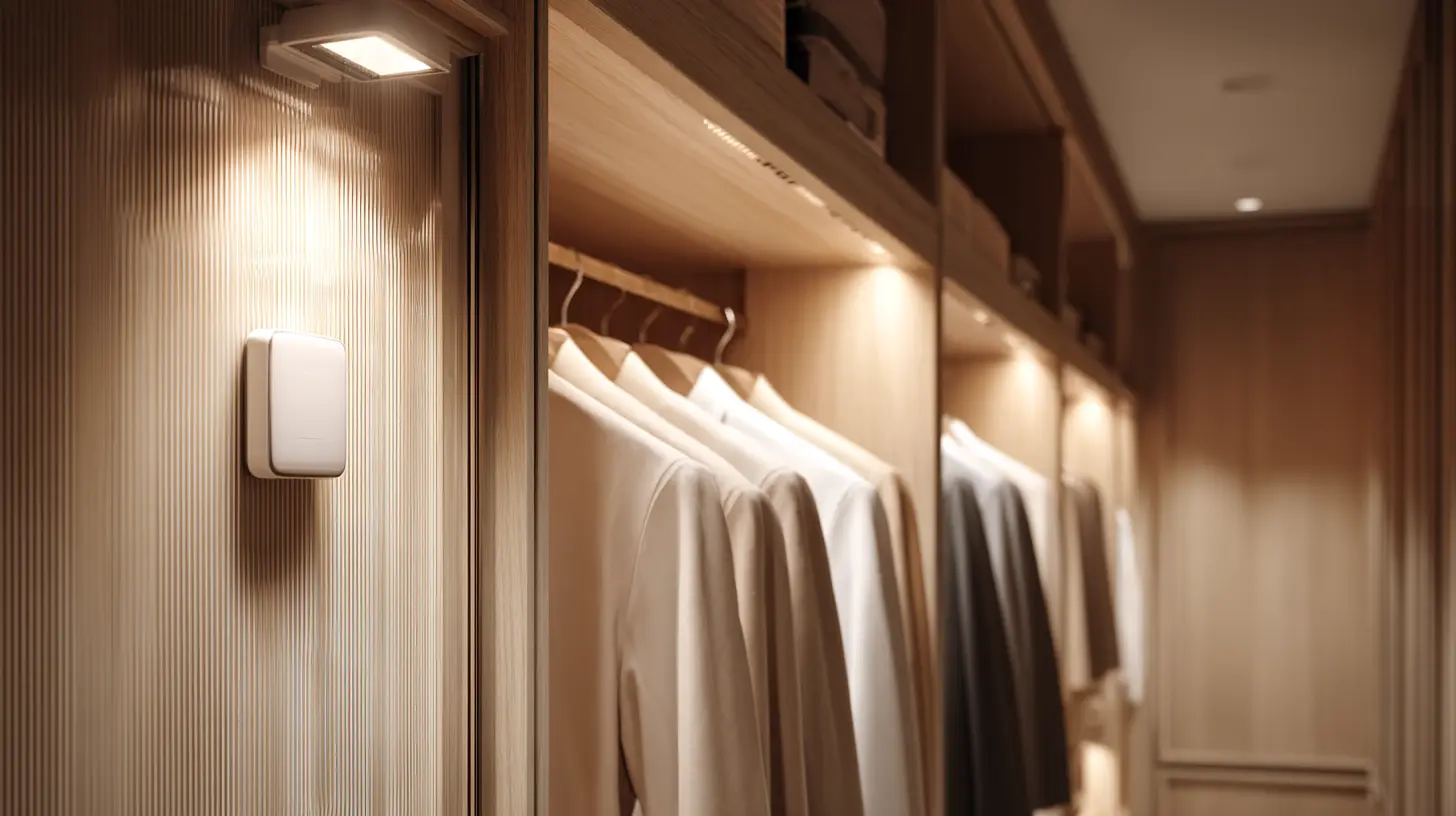
Automated Lighting and Sensors: Built-in sensors will trigger lighting when the wardrobe door is opened, providing efficient and effective illumination. These systems may also include adaptive lighting, changing the brightness or color temperature based on the time of day.
7.2 AI-Powered Organization
AI will play a crucial role in wardrobe design by helping users maintain organization and streamline their daily routines.
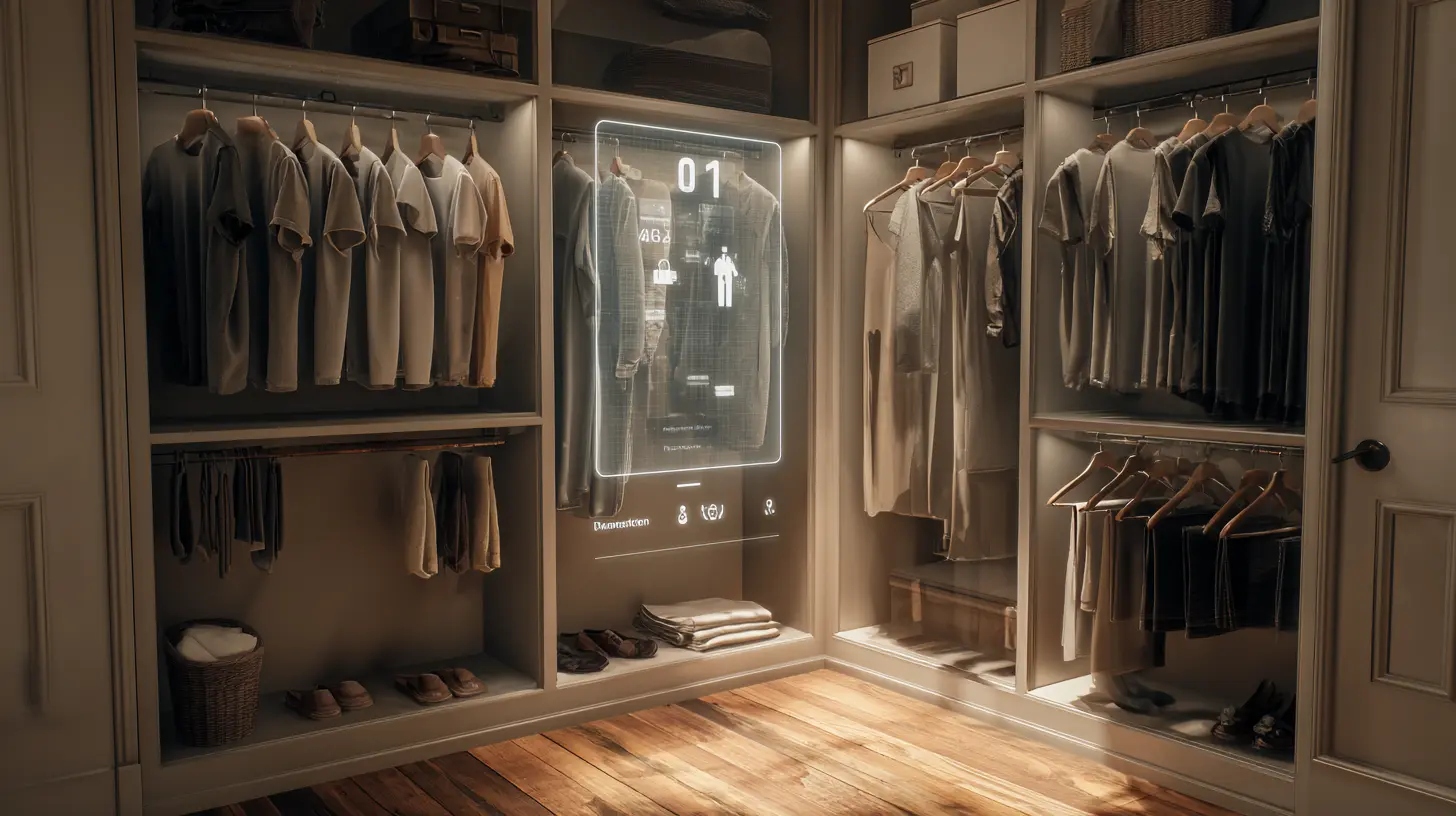
Outfit Suggestions: AI systems within smart wardrobes will recommend outfits based on weather, personal style, or past preferences. By learning the user’s wardrobe choices, the system will become better at suggesting combinations that match the user’s taste and schedule.
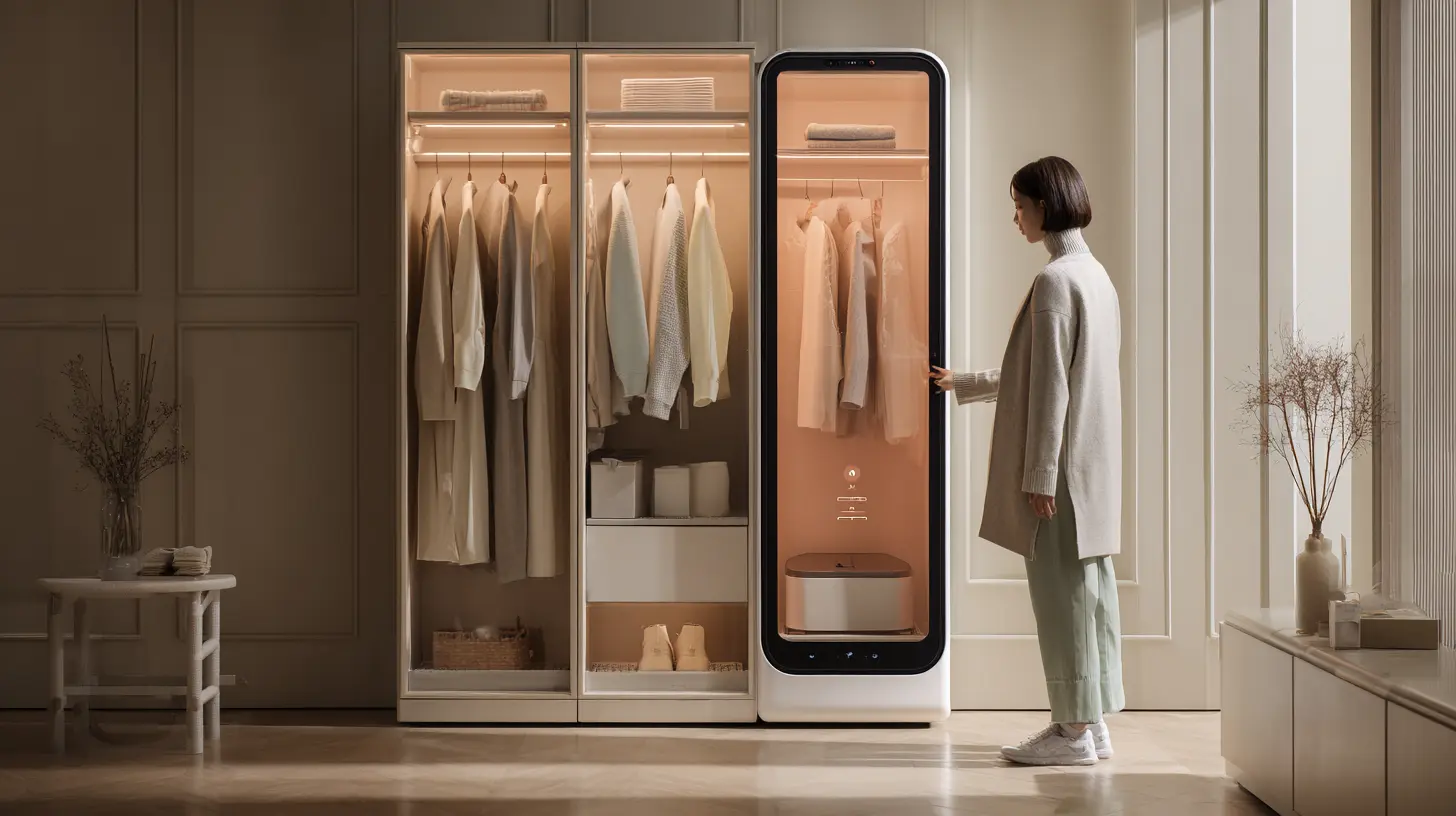
Automated Cleaning and Maintenance Alerts: Smart wardrobes will also keep track of garment care, reminding users when items need to be cleaned or repaired. This function ensures that clothes are well-maintained and ready for wear.
8. Sustainability and Eco-friendly Trends
As environmental concerns grow, sustainability will continue to be a critical factor in wardrobe design. Custom wardrobes in 2025 will emphasize eco-friendly materials, energy-efficient features, and waste reduction.
8.1 Sustainable Materials
Consumers will increasingly seek wardrobes made from sustainable and recycled materials. This will include the use of certified wood, recycled metals, and eco-friendly fabrics. Designers will also focus on non-toxic finishes, such as water-based paints and low-VOC varnishes, to reduce environmental impact.
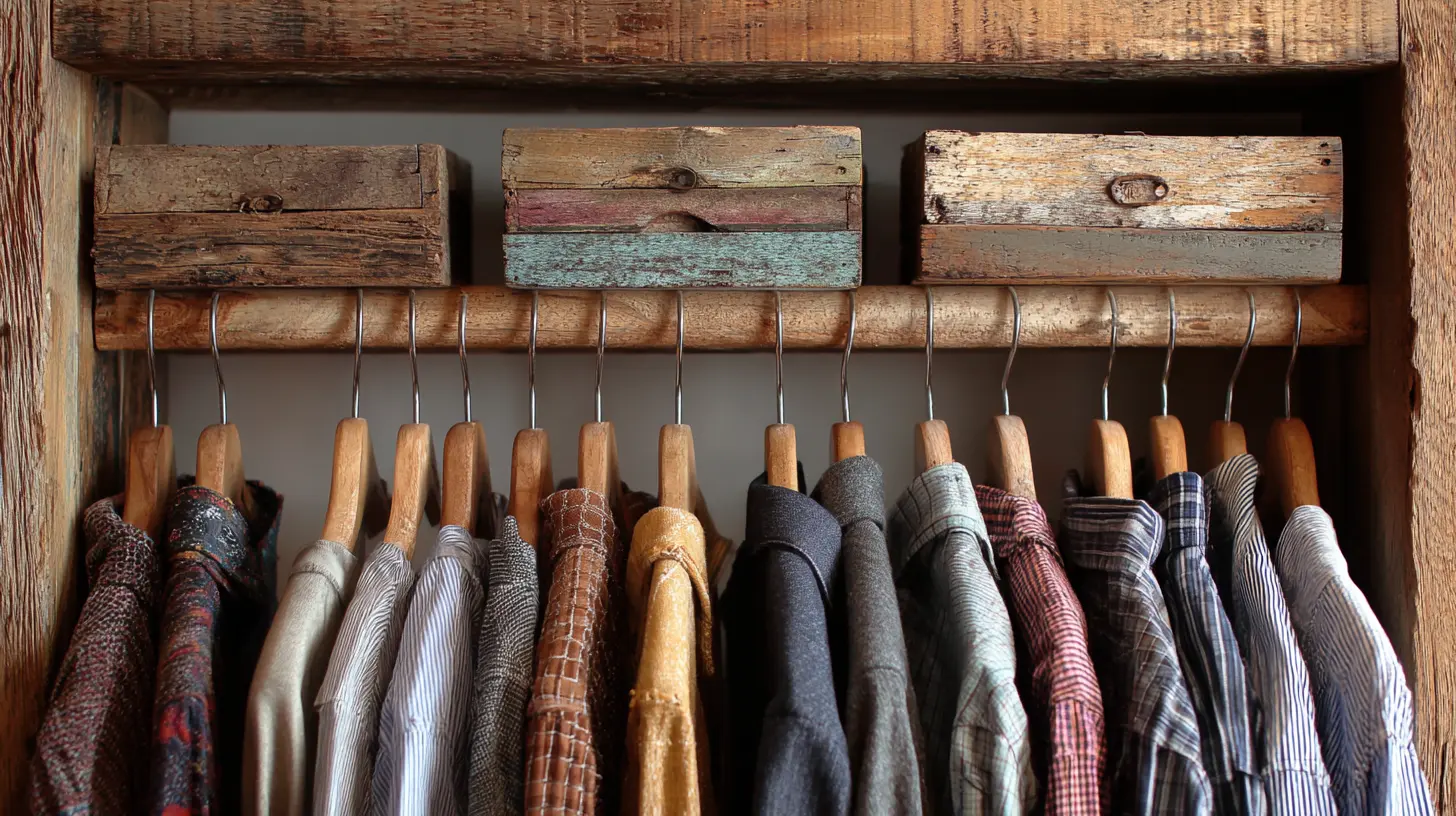
Reclaimed Wood: The use of reclaimed wood from old furniture or buildings will continue to be a trend in sustainable wardrobe design. This material not only reduces waste but also adds a unique and vintage charm to the wardrobe.
8.2 Energy Efficiency
Energy-efficient wardrobes will be designed with features that reduce energy consumption, such as built-in LED lighting that consumes less power and automatically switches off when not in use. Some wardrobes will also integrate climate control systems that help regulate temperature and humidity, protecting clothing while minimizing energy use.
8.3 Waste Reduction and Recycling
As part of the global movement toward reducing waste, wardrobes will be designed with longevity in mind. Modular designs that allow parts to be replaced or repurposed will become more common, reducing the need for complete replacements.
9. Custom Wardrobe Market Analysis
9.1 Consumer Demand and Behavior
As we approach 2025, consumer demand for custom wardrobes will be shaped by a desire for personalization, technological innovation, and sustainability. Consumers are moving away from traditional, mass-produced wardrobes and are instead seeking bespoke solutions that reflect their unique tastes and lifestyles.
Growing Interest in Customization: Custom wardrobes that cater to individual preferences are becoming increasingly popular. Consumers are seeking wardrobes that offer tailored storage solutions, from specialized compartments to integrated tech features.
9.2 Brand Competition and Innovation
Brands that offer innovative solutions and customization options will be well-positioned for success in the coming years. The competition will intensify as more players enter the market, with differentiation in design, material quality, and technology being key to staying ahead.
10. Conclusion and Recommendations
10.1 Future Outlook
The custom wardrobe market is poised for significant growth, driven by consumer demand for personalized, sustainable, and technologically advanced solutions. The next few years will see a continued focus on multifunctionality, smart features, and eco-friendly designs.
10.2 Recommendations for Designers and Brands
Designers and brands should prioritize innovation and sustainability in their custom wardrobe offerings. Understanding evolving consumer needs, such as the demand for smart features and sustainable materials, will be essential for staying competitive. By embracing flexibility, technology, and eco-conscious design, brands can meet the expectations of the modern consumer.
FAQs
1.What are the latest color trends for custom wardrobes in 2025?
Neutral tones like gray, beige, and white remain popular for their versatility. Darker shades such as deep blue, charcoal, and black are gaining traction for a luxurious feel. Accent colors like gold, brass, and earthy hues like olive green and terracotta are also trending.
2.Which materials are recommended for sustainable wardrobe designs?
Eco-friendly materials like solid wood, bamboo, and recycled components are favored. Engineered woods such as MDF and plywood offer durability and cost-effectiveness. These materials align with the growing demand for sustainable home solutions.
3.How can I maximize space in my custom wardrobe?
Incorporating features like sliding doors, modular units, and vertical storage solutions can optimize space. Adjustable shelves and hooks further enhance storage efficiency, making the most of available space.
4.What finishes are trending for custom wardrobes in 2025?
Matte finishes continue to be popular for their modern appeal, while glossy finishes are making a comeback for a sleek look. The choice between matte and glossy depends on the desired aesthetic and maintenance preferences.
5.Are smart features integrated into custom wardrobes?
Yes, integrating smart features like motion-sensor lighting, automated shelving, and built-in charging stations is becoming common. These additions enhance functionality and cater to the tech-savvy homeowner.
About PA Home
PAHome is a leading brand specializing in whole-home customization, offering premium solutions for wardrobes, custom kitchen cabinets, bathrooms, doors, and windows. With over 17 years of experience and a presence in more than 80 countries, PA Home delivers high-quality, sustainable, and technologically advanced designs tailored to individual lifestyles. Their state-of-the-art manufacturing facilities in China, Indonesia, Saudi Arabia, and the UAE ensure precision and efficiency in every project.
For those interested in custom wardrobe solutions, PA Home provides personalized design assistance, competitive pricing, and comprehensive support from consultation to installation. Whether you’re a homeowner, designer, or business partner.
PA Home is ready to collaborate and bring your vision to life. Contact us today to explore how we can transform your space.
Contact PA Home
Related posts:
- 2025 Custom Kitchen Cabinet Trends Research Report
- Wardrobe Color Ideas 2025: Creative and Stylish Design Trends for Your Home in in Indonesia
- Top 10 Stunning Wardrobe Designs for Apartments in Indonesia
- 20 Most Popular Modern Kitchen Cabinets Designs in Indonesia
- IKEA Wardrobes vs. Custom Wardrobes: Pros, Cons, and the Smarter Choice

